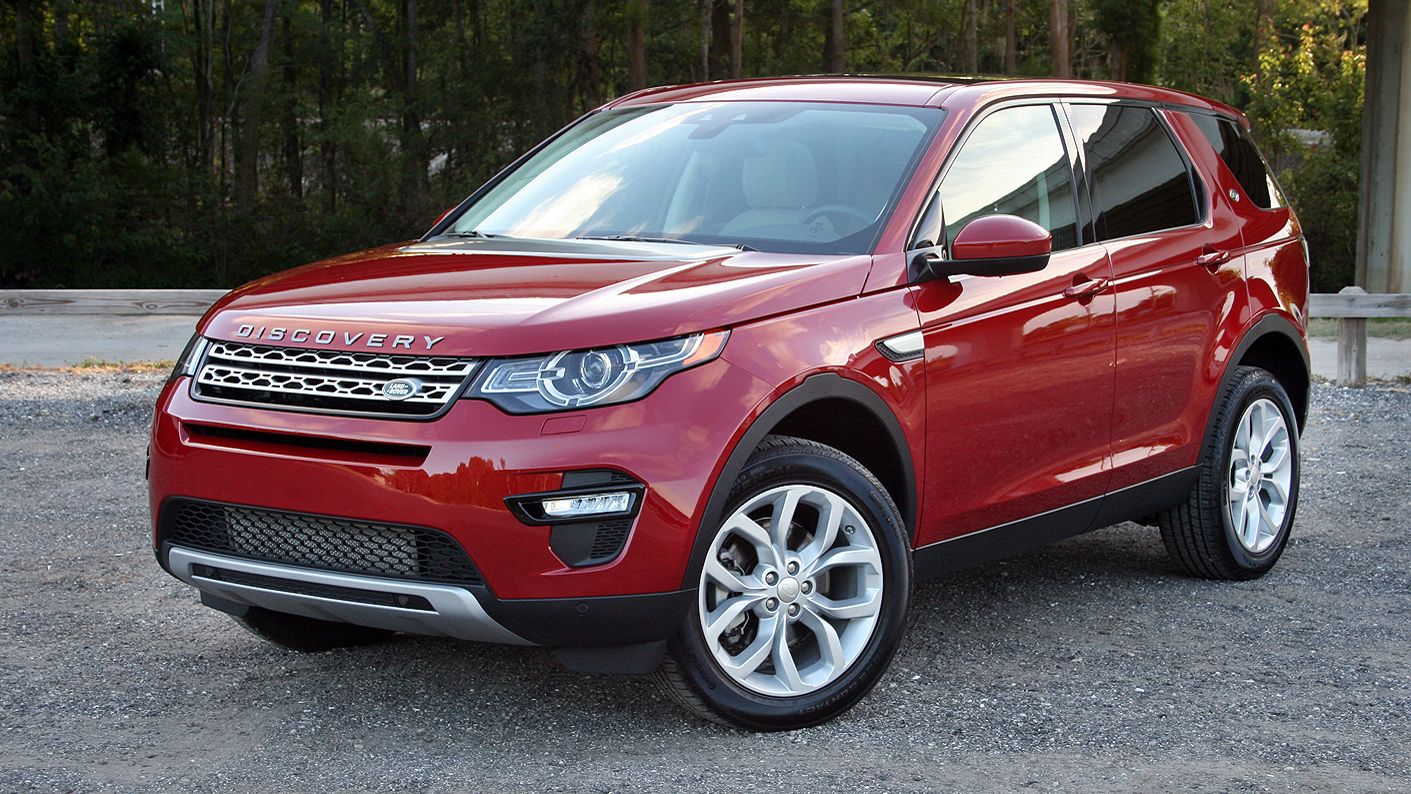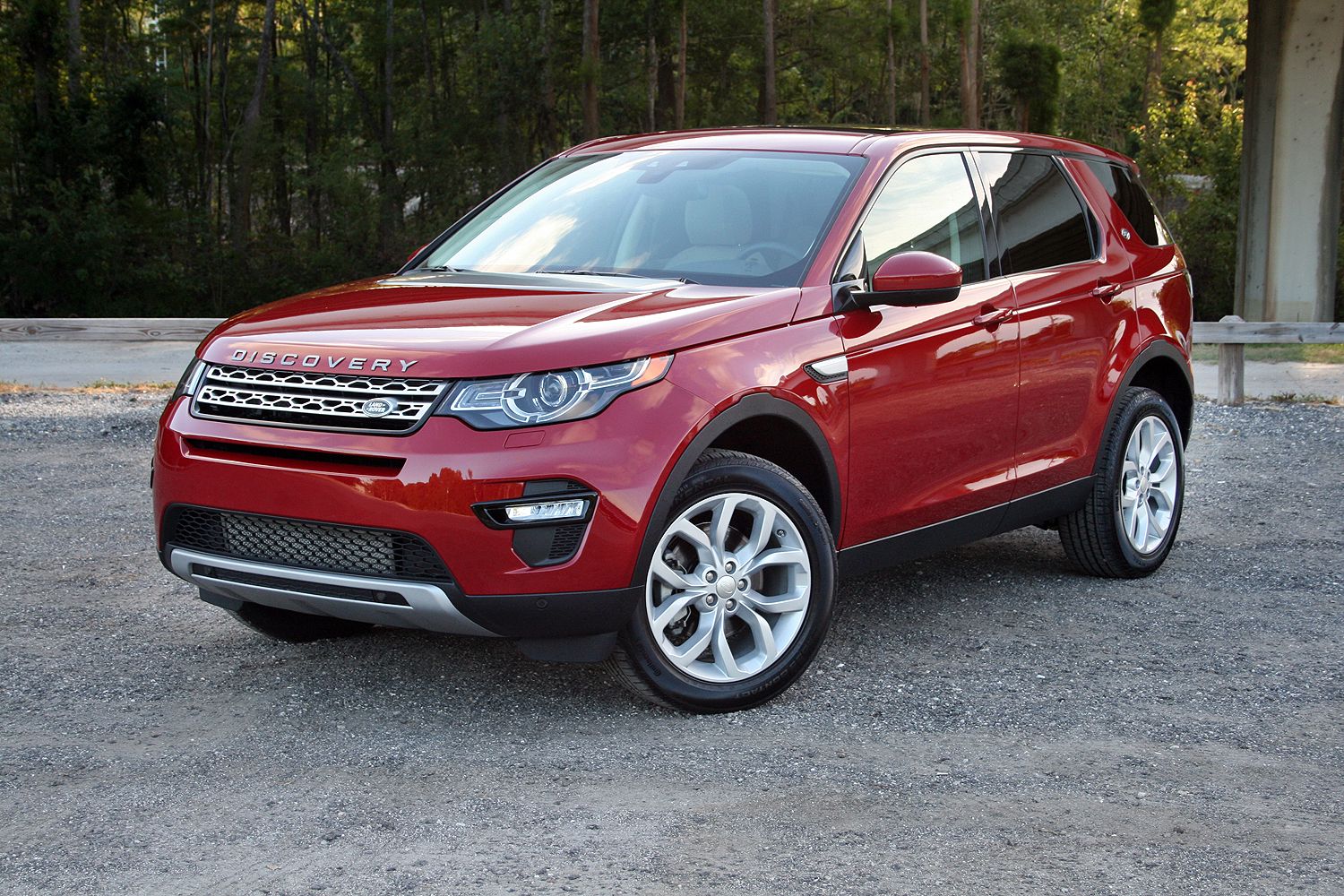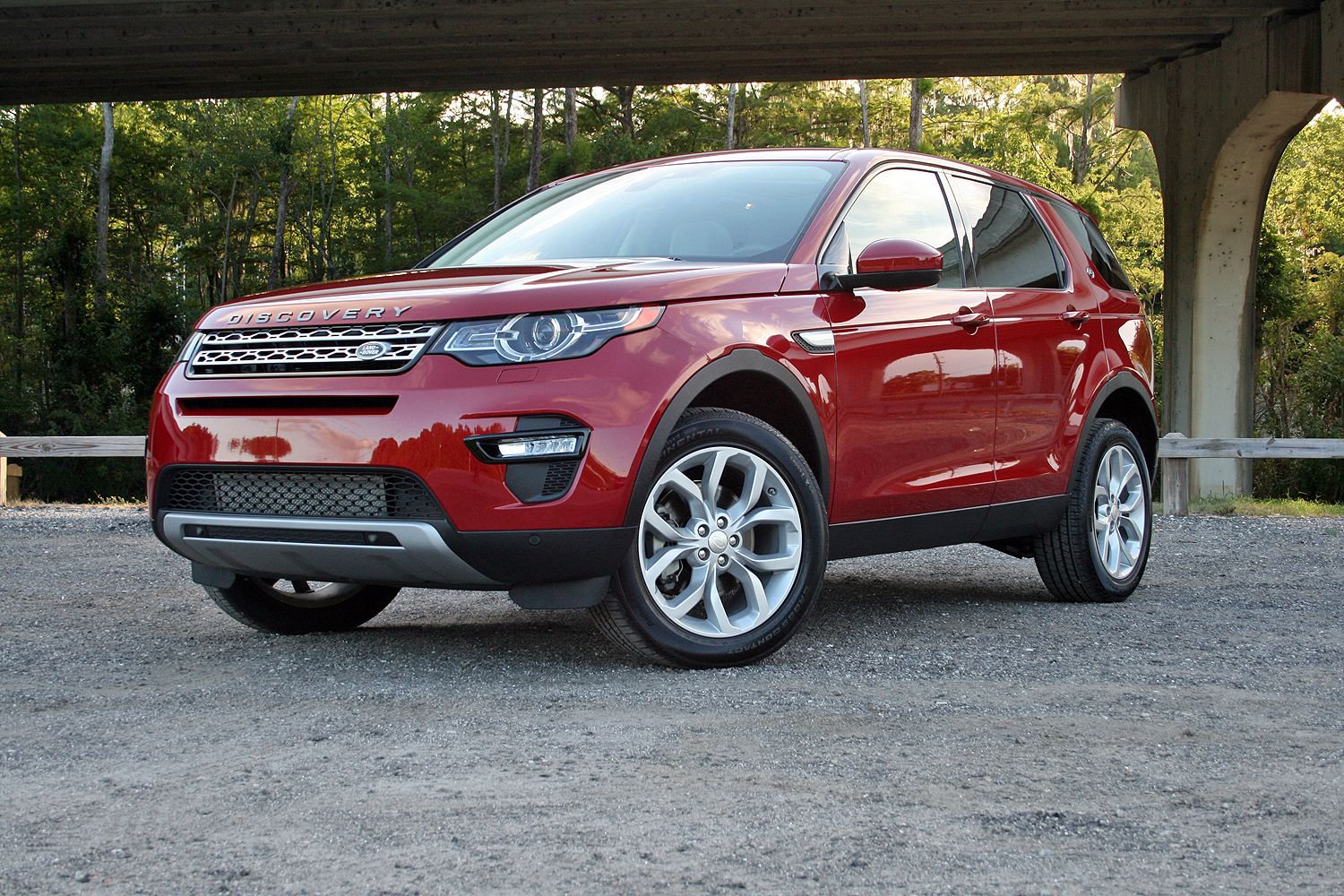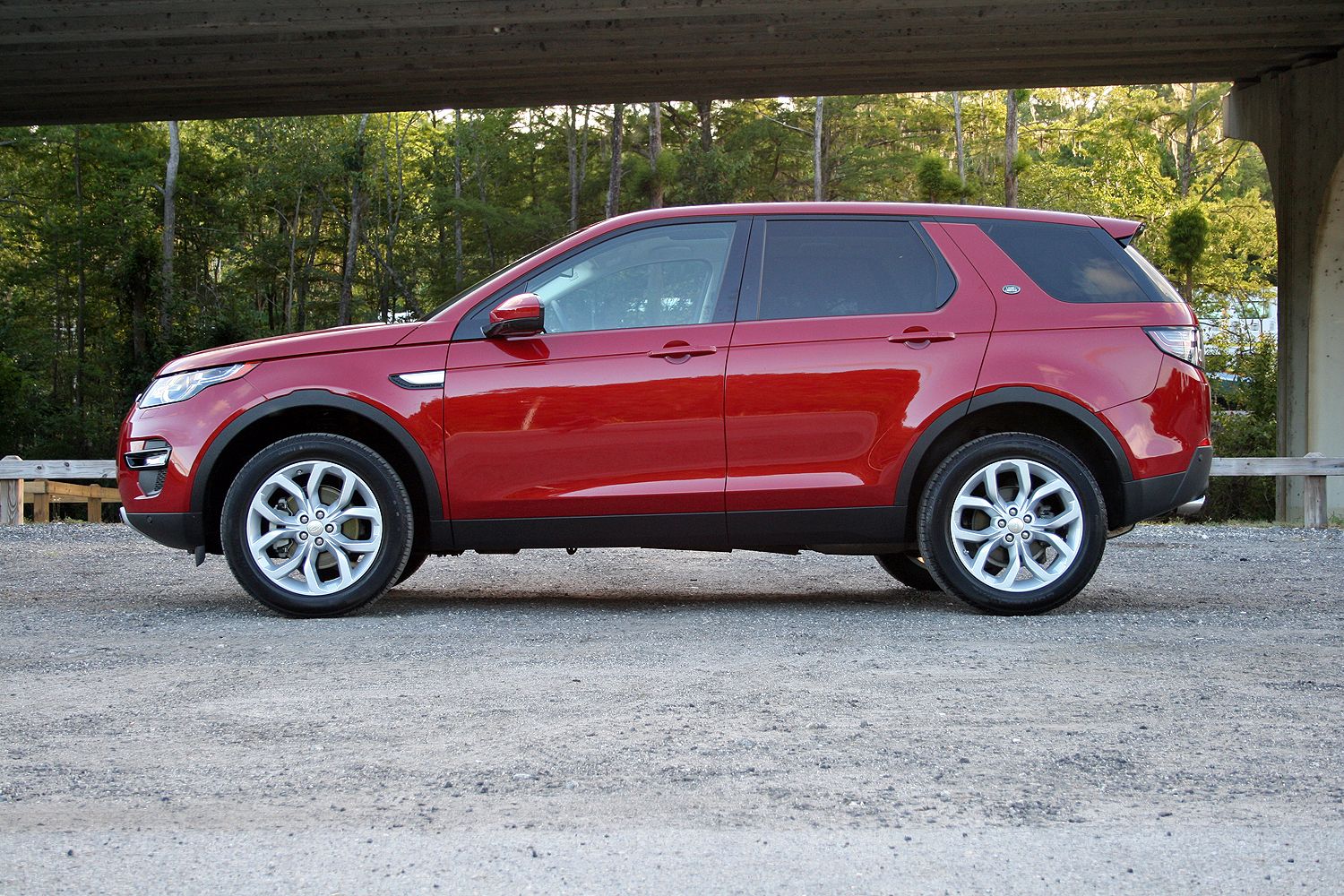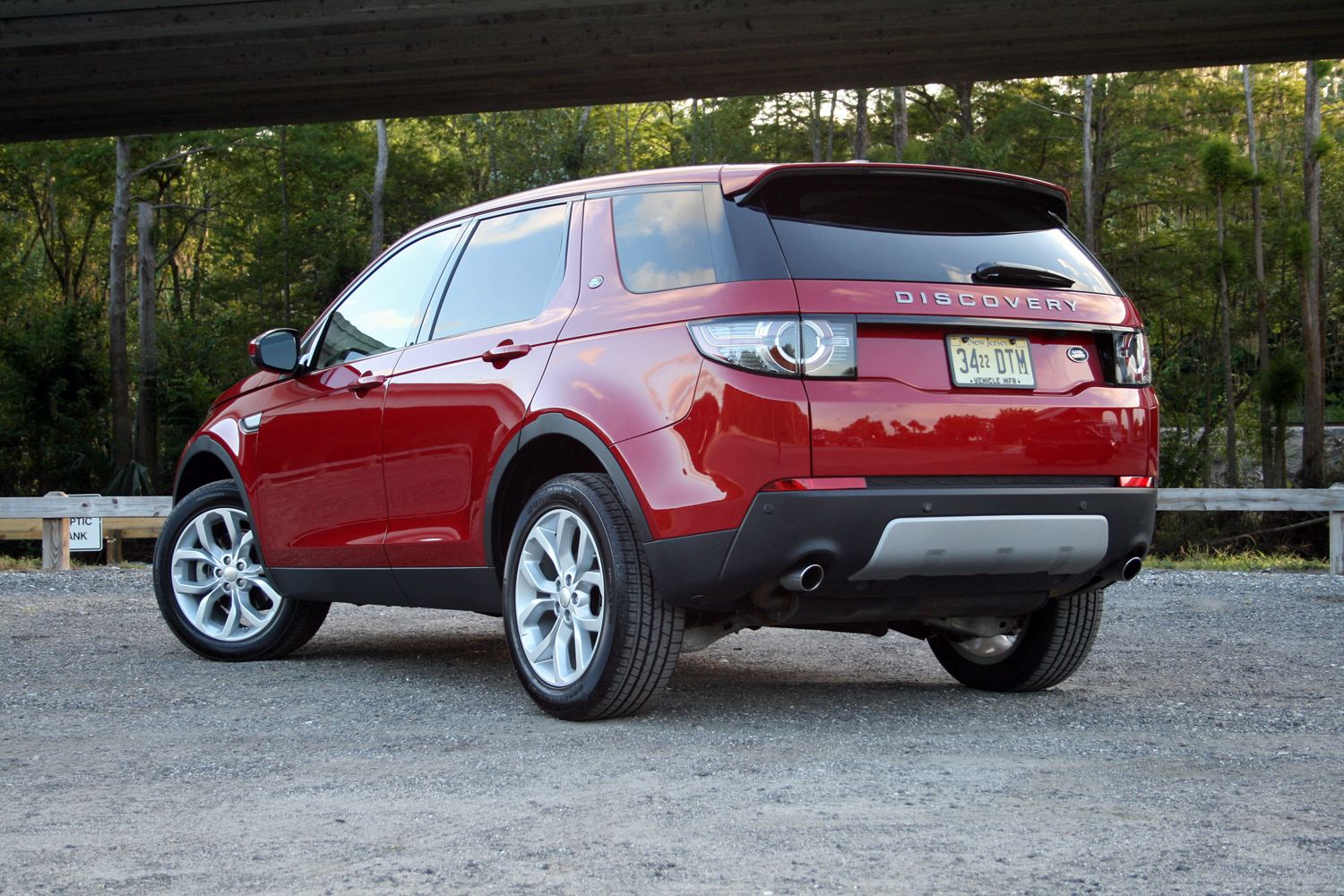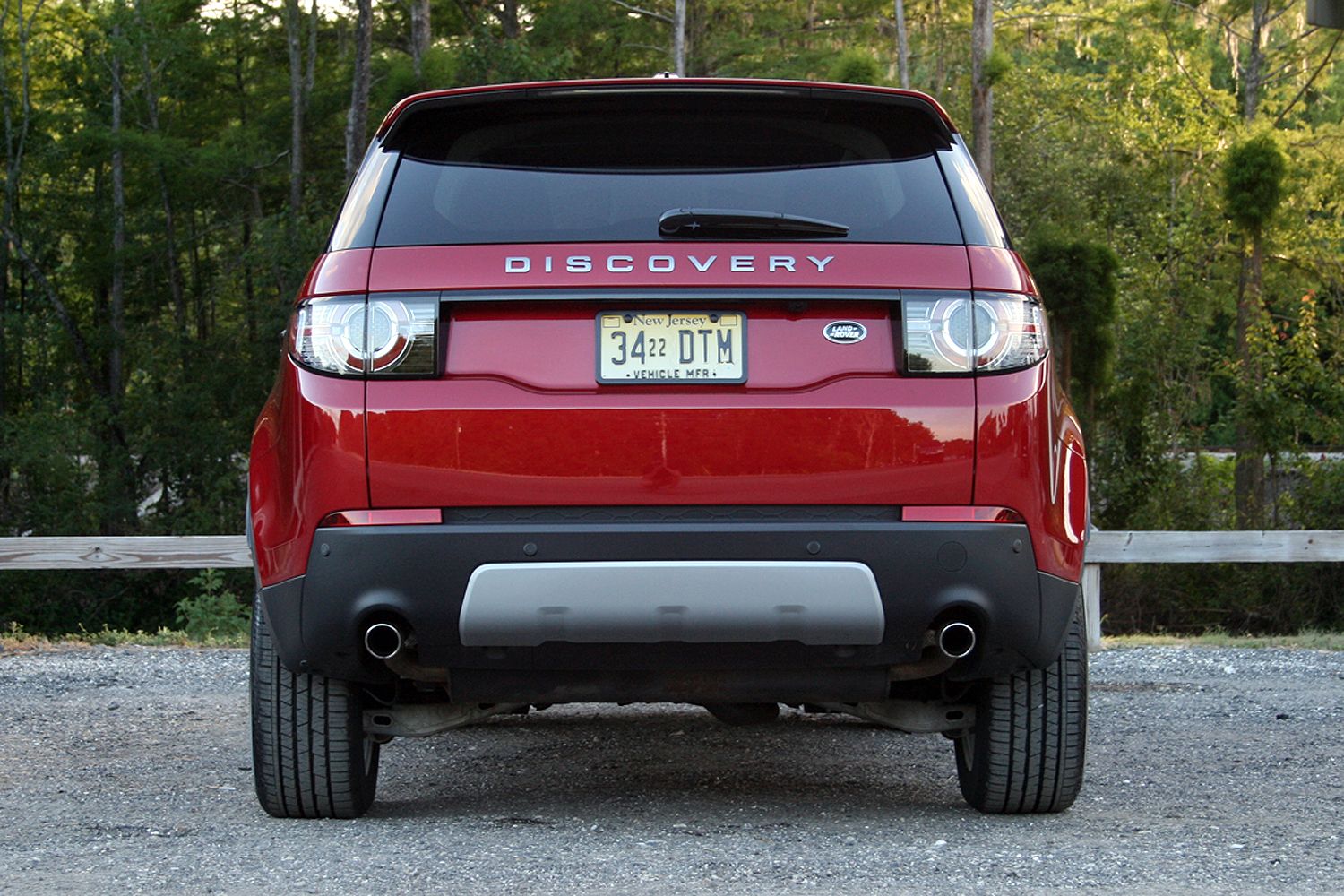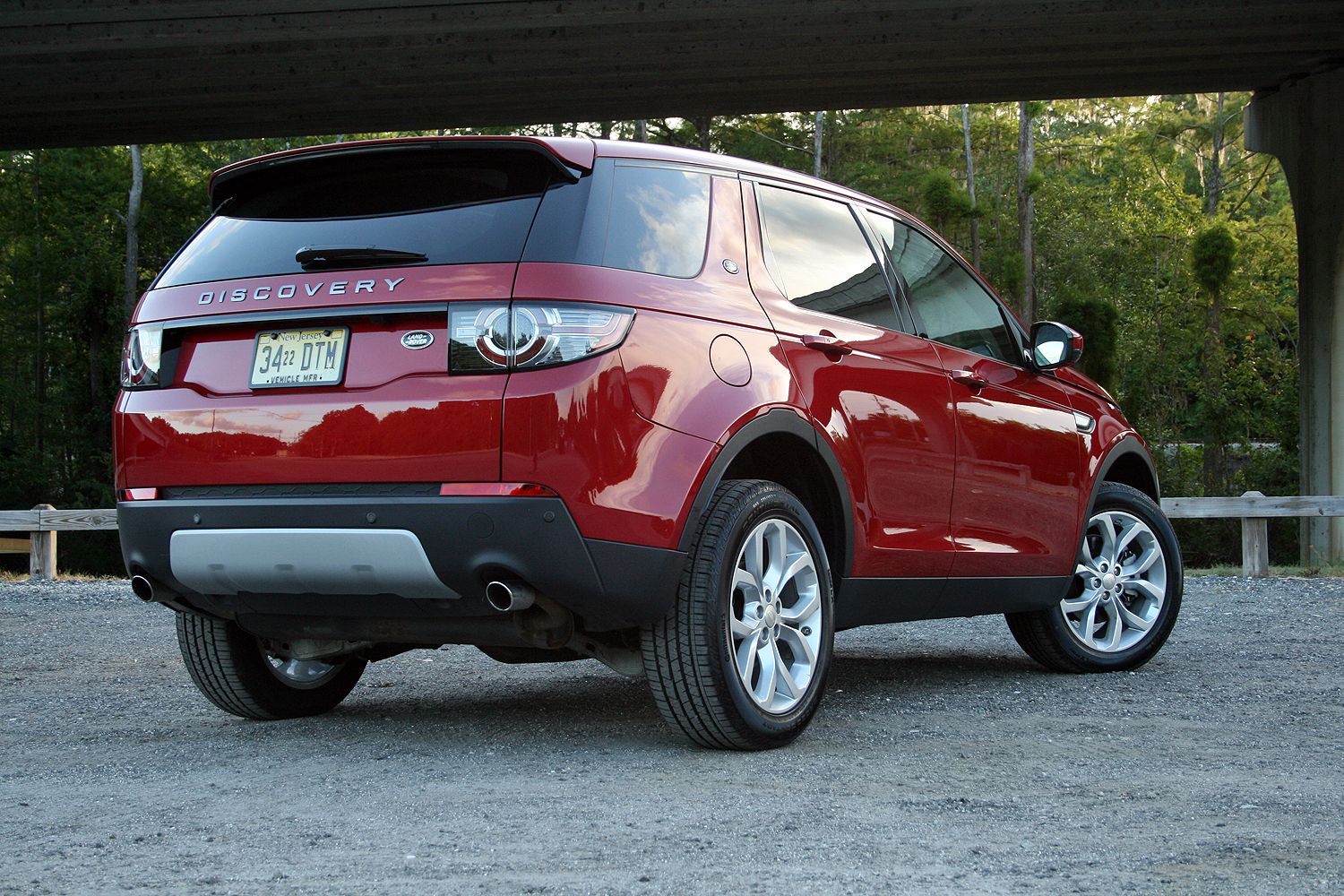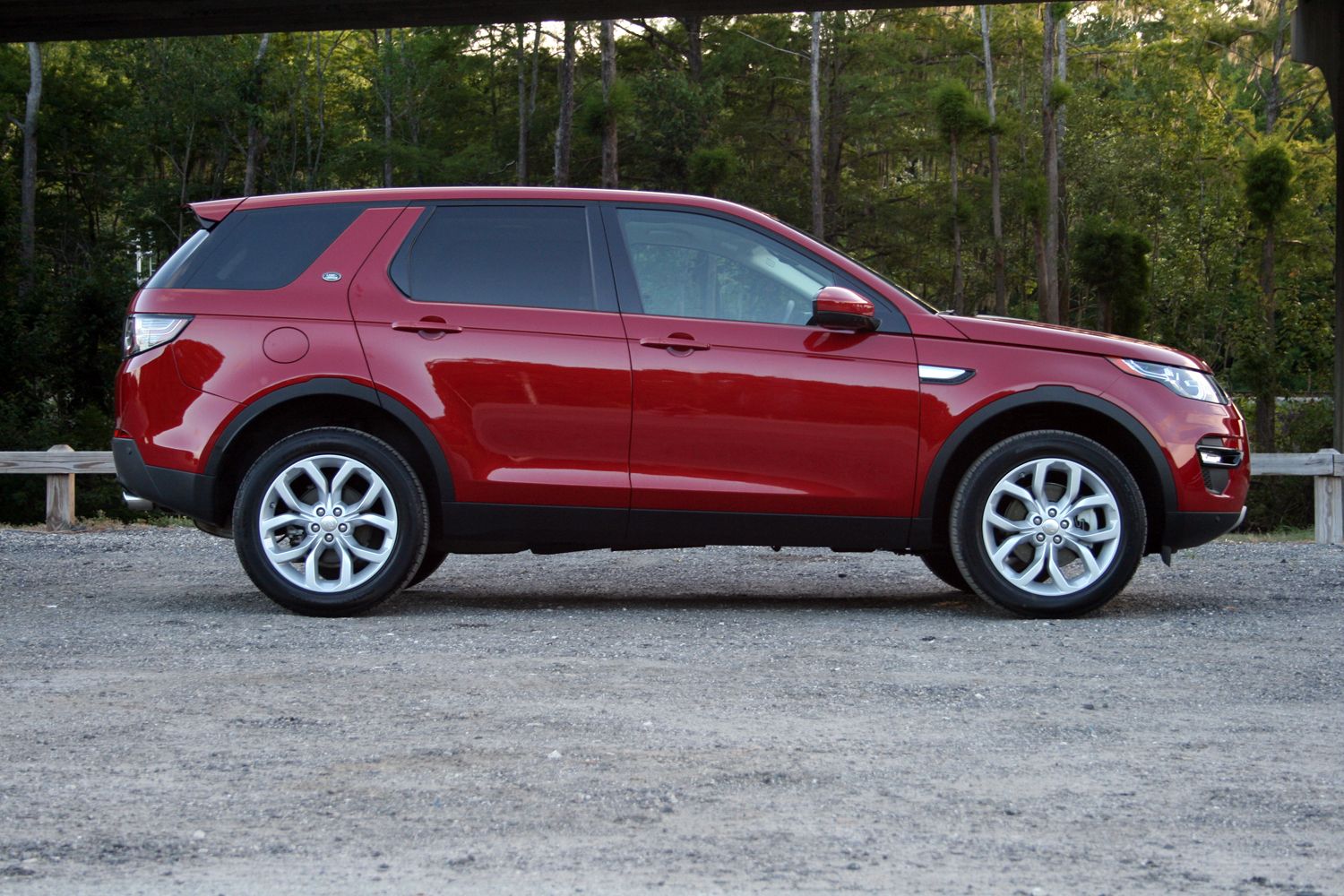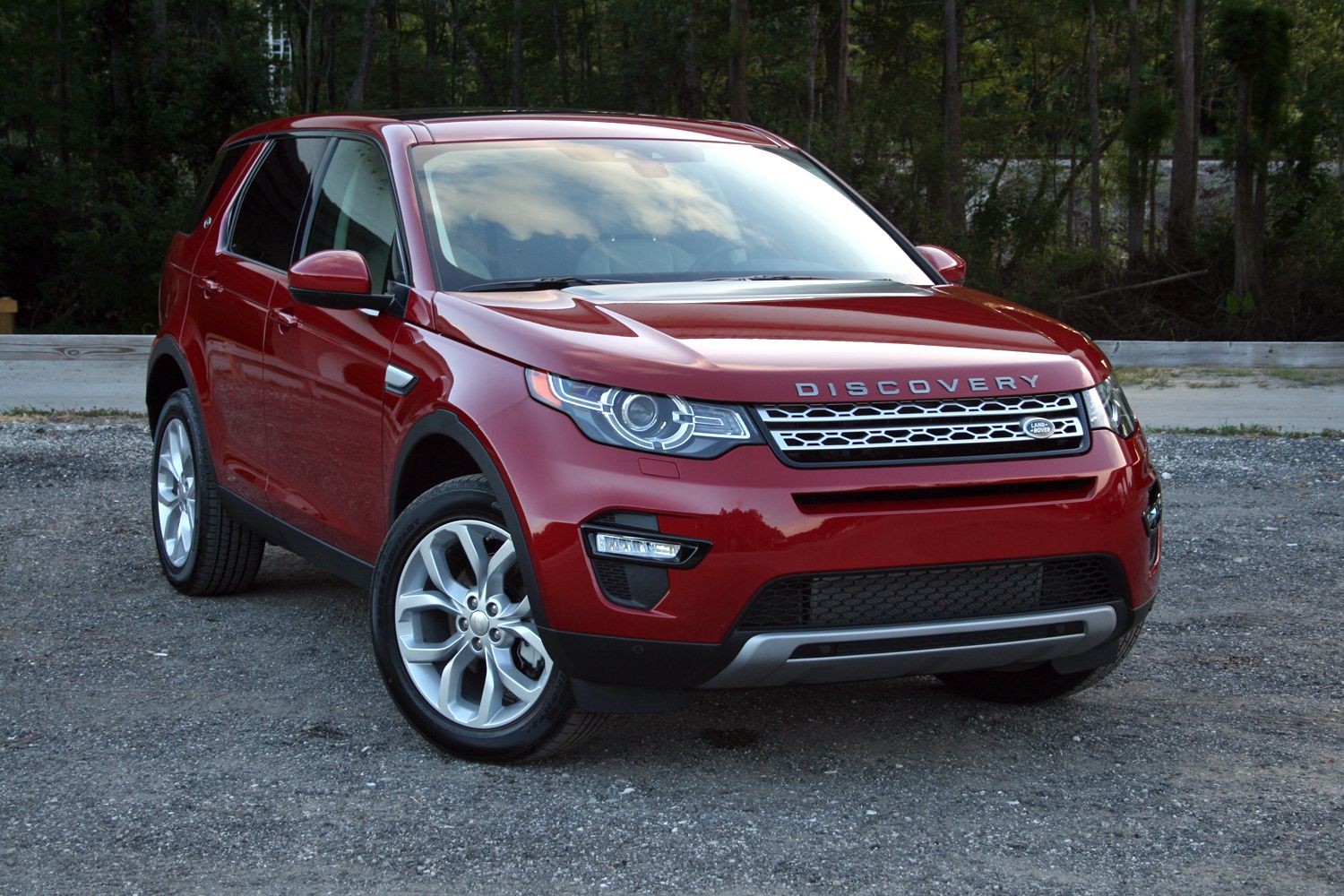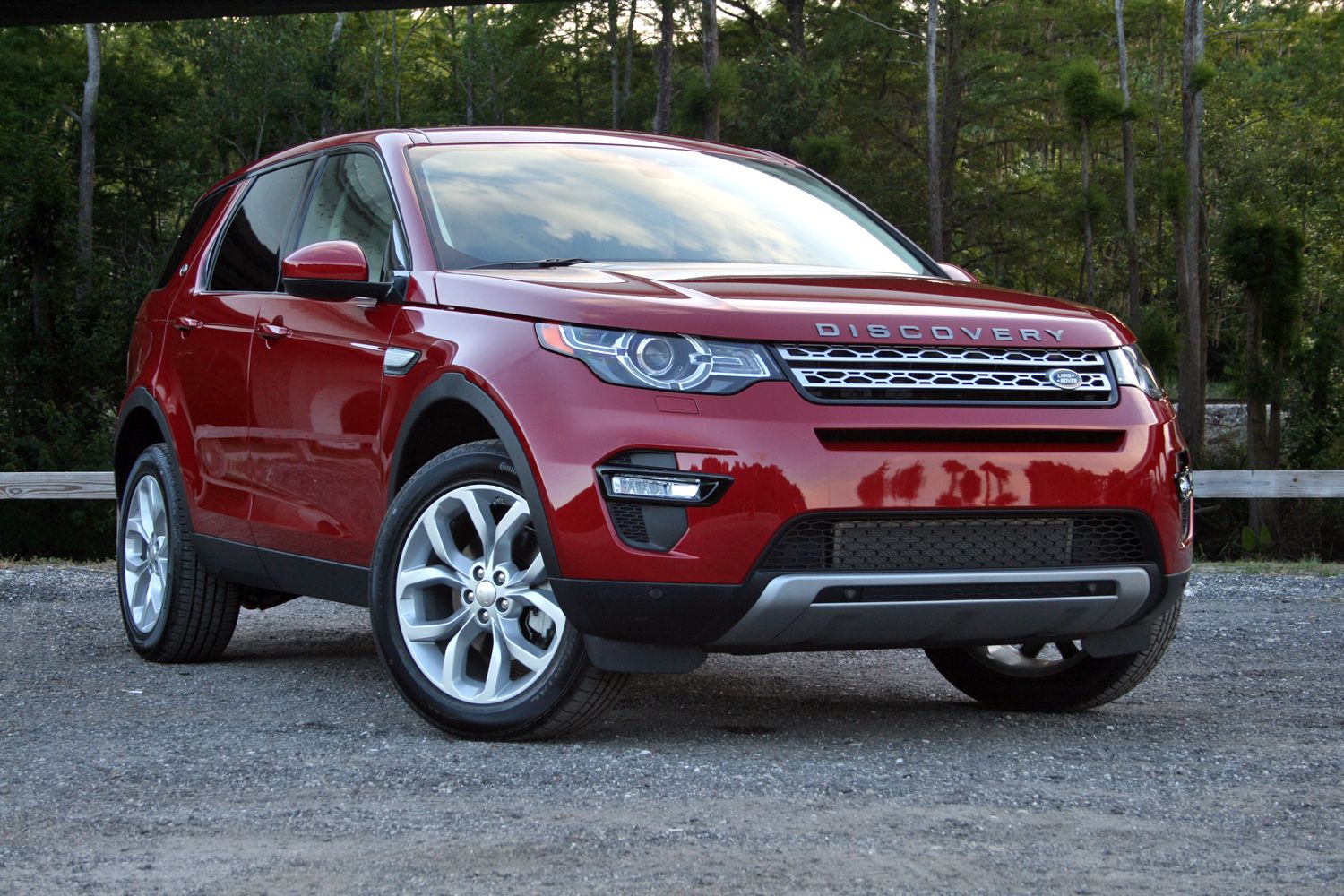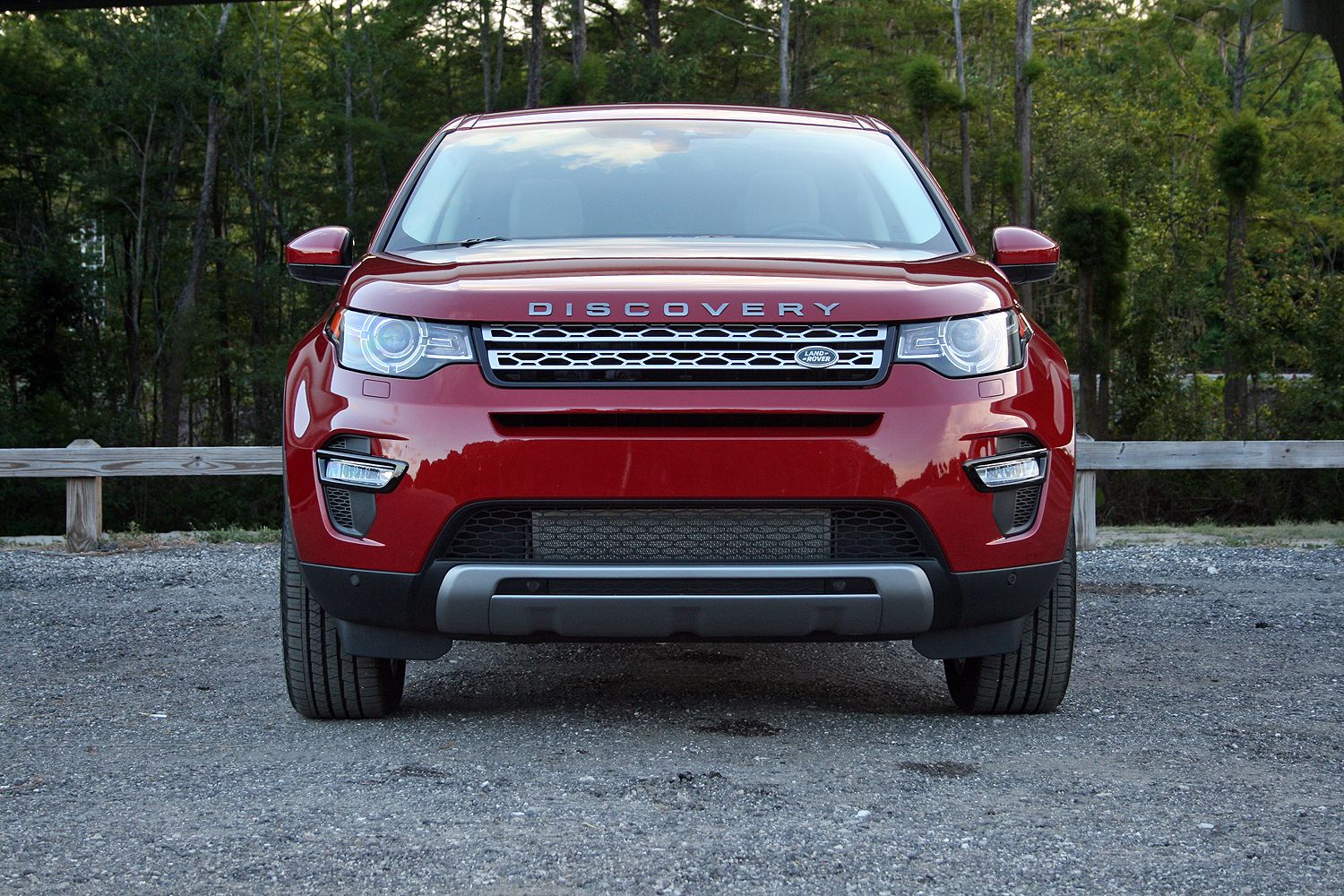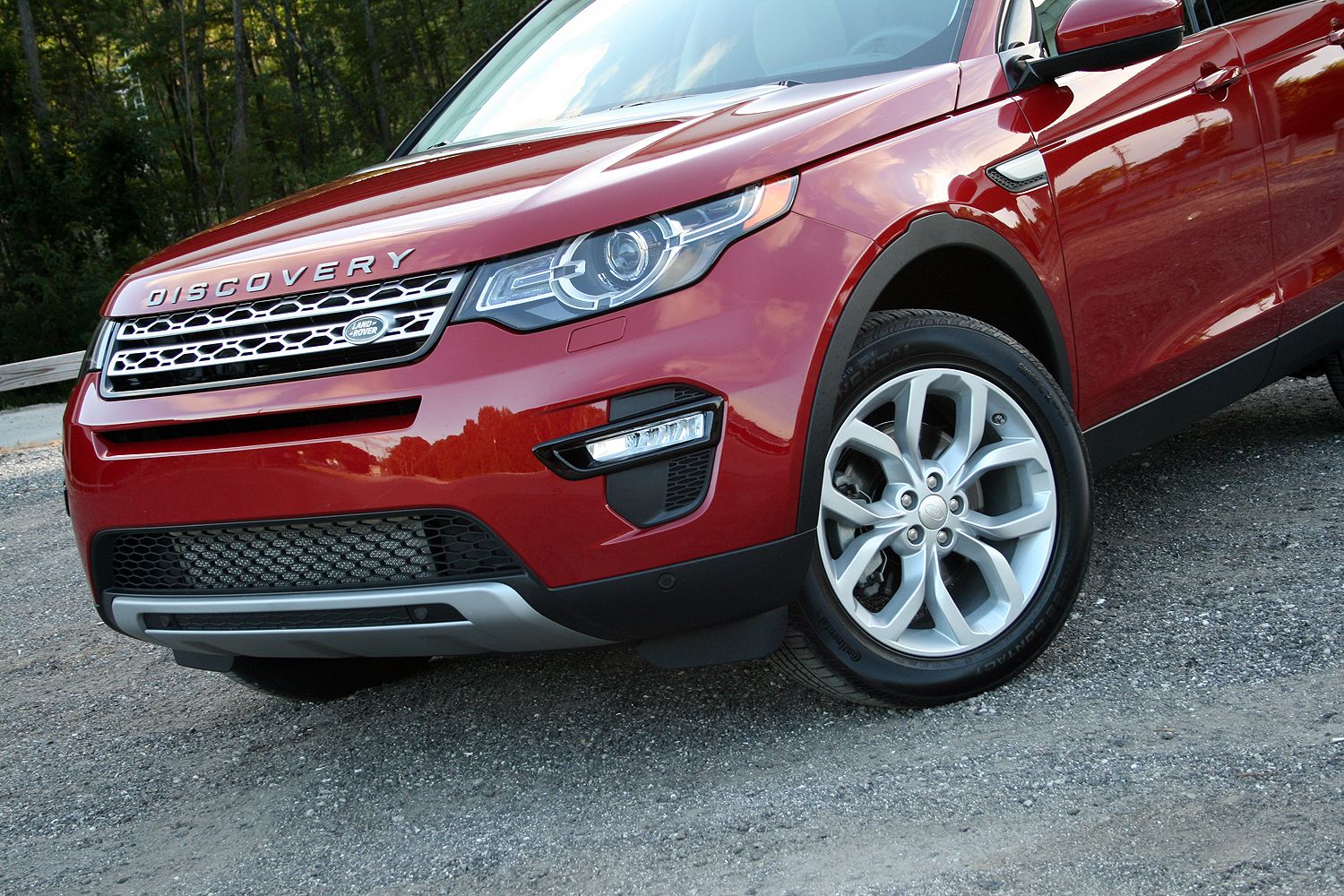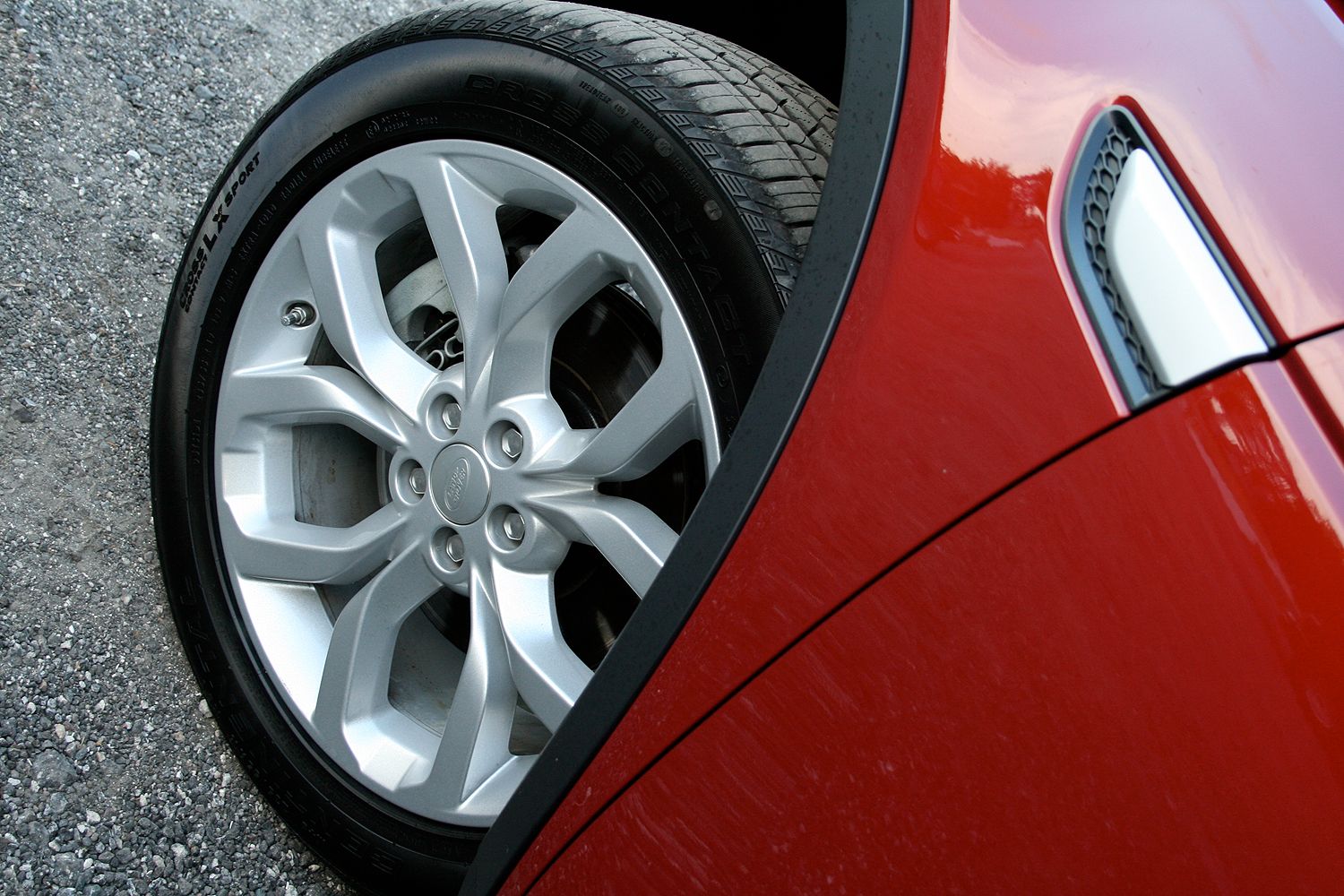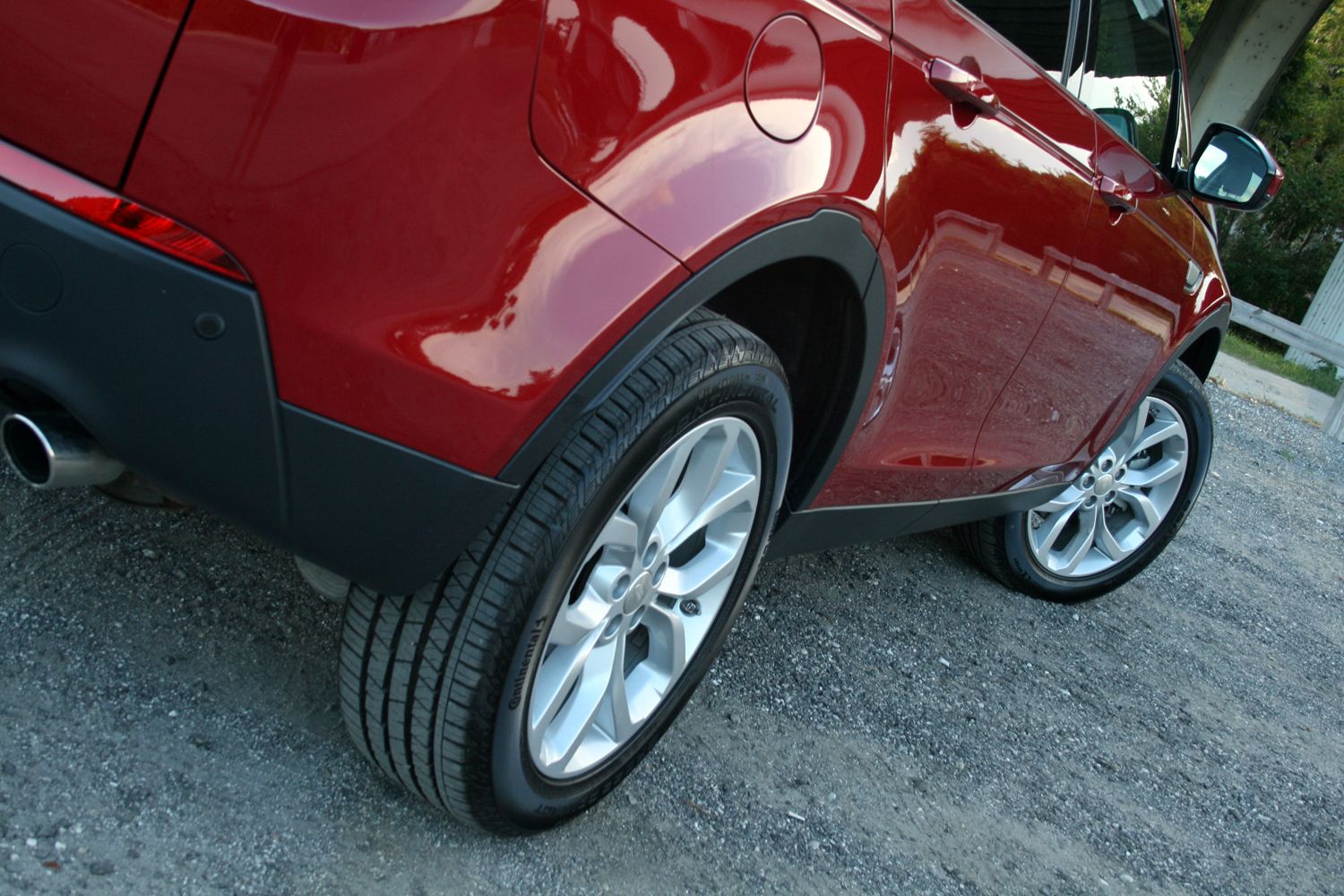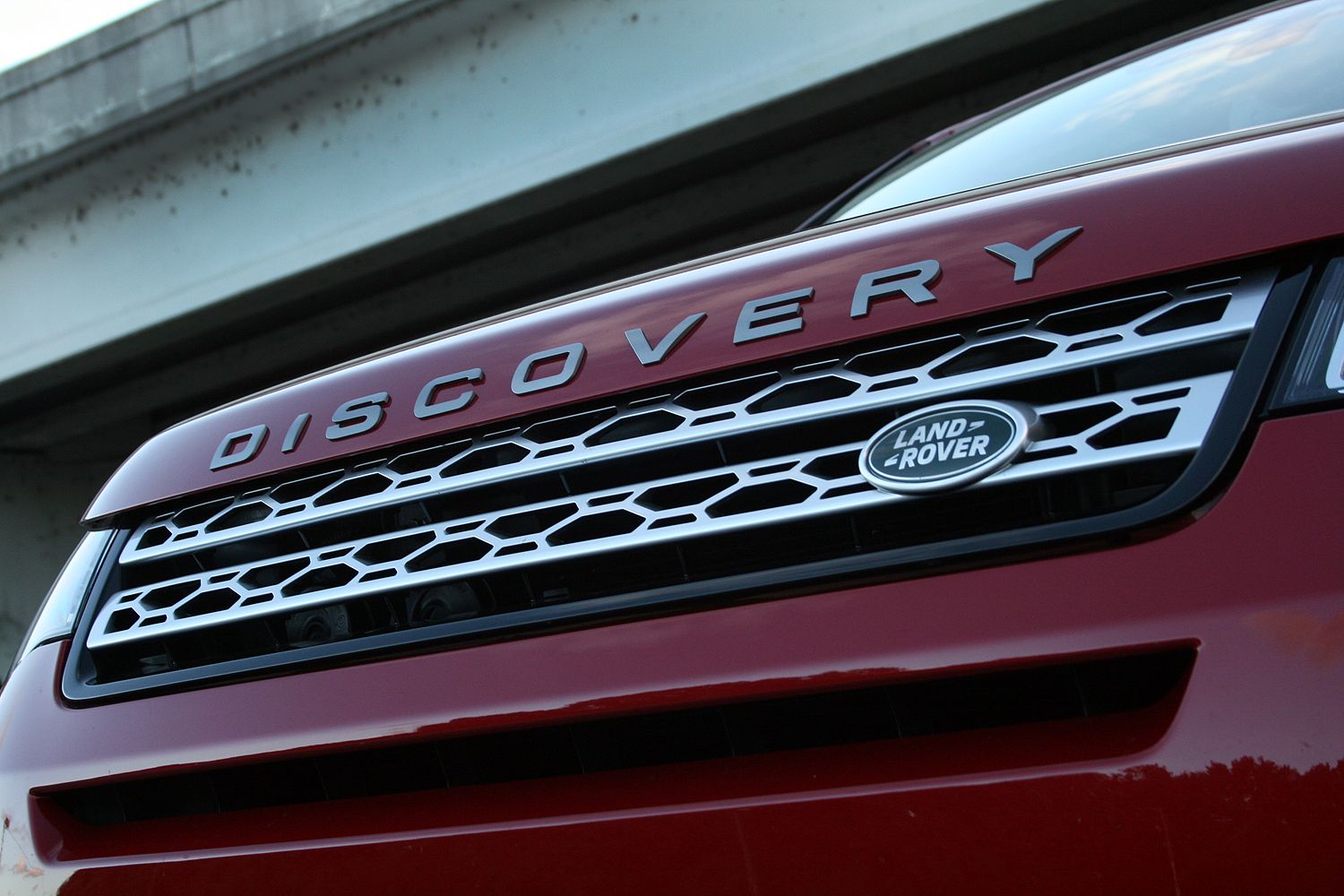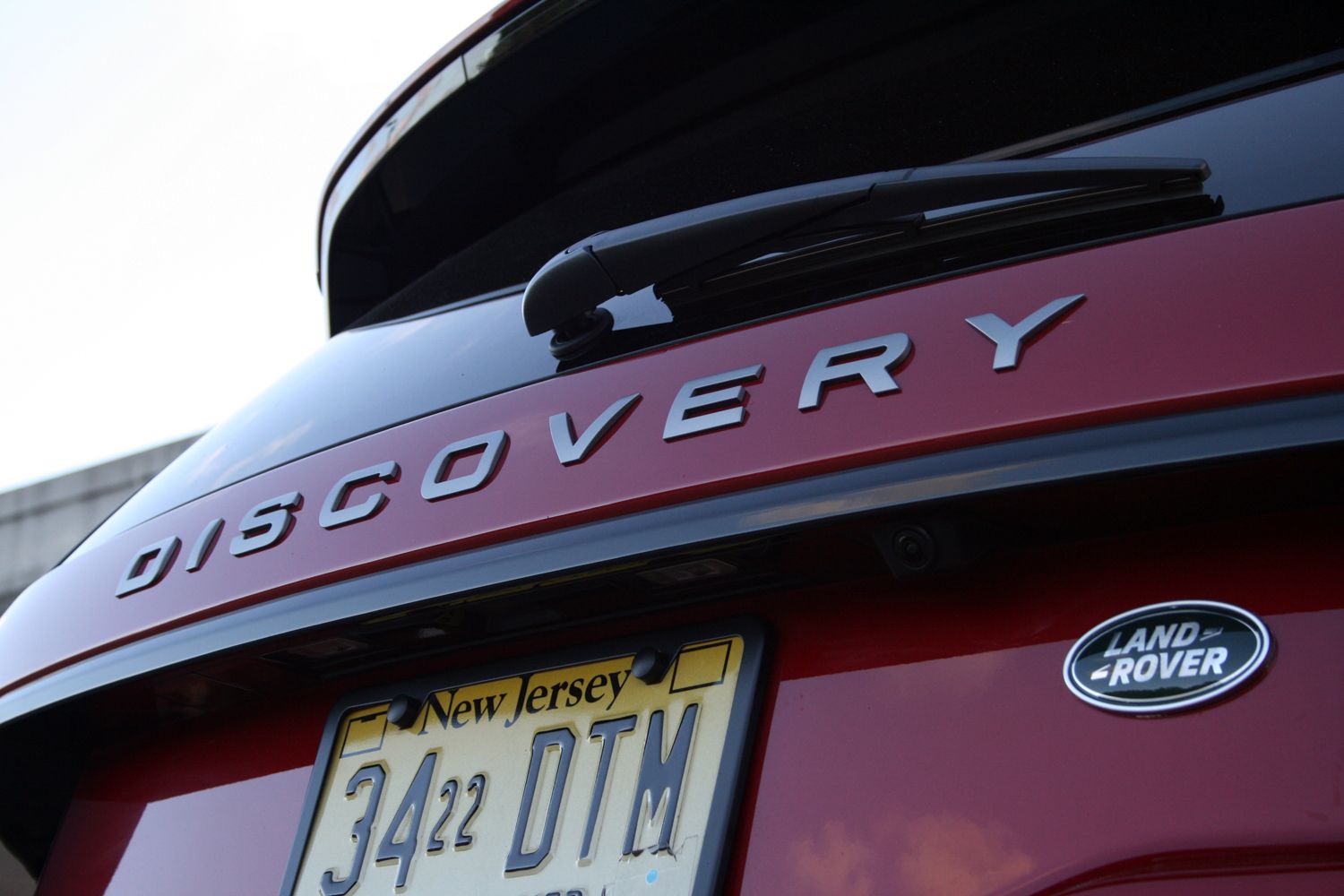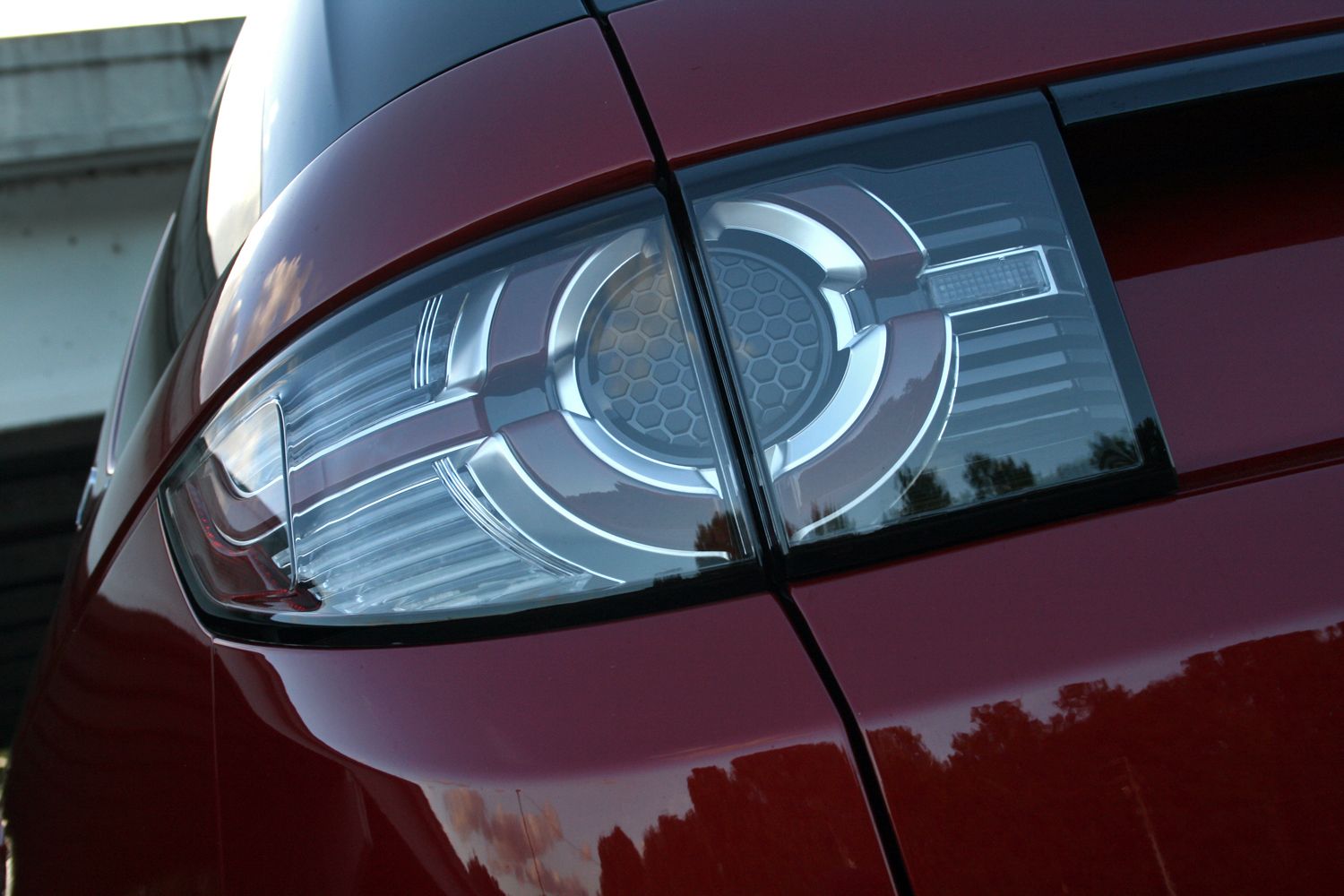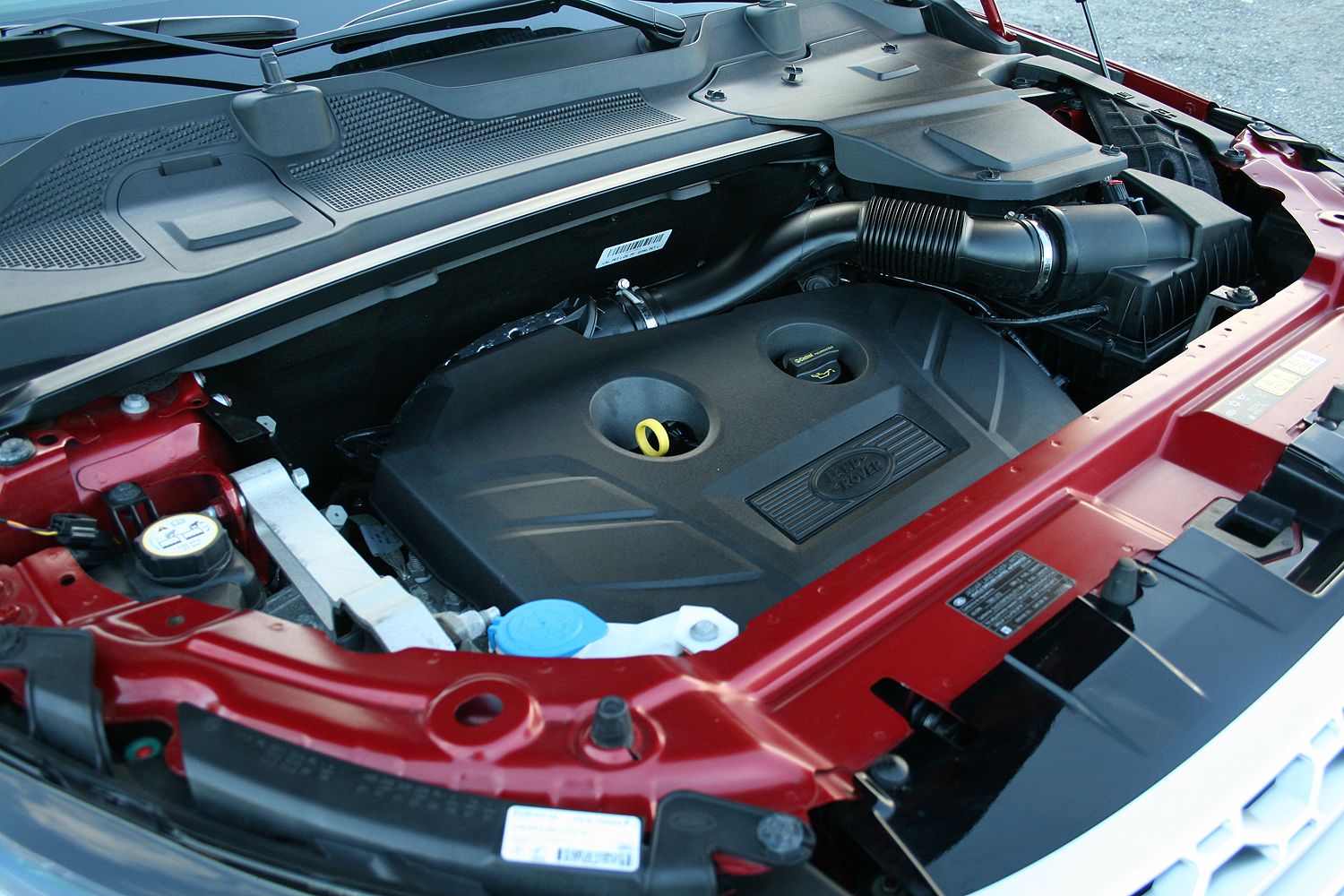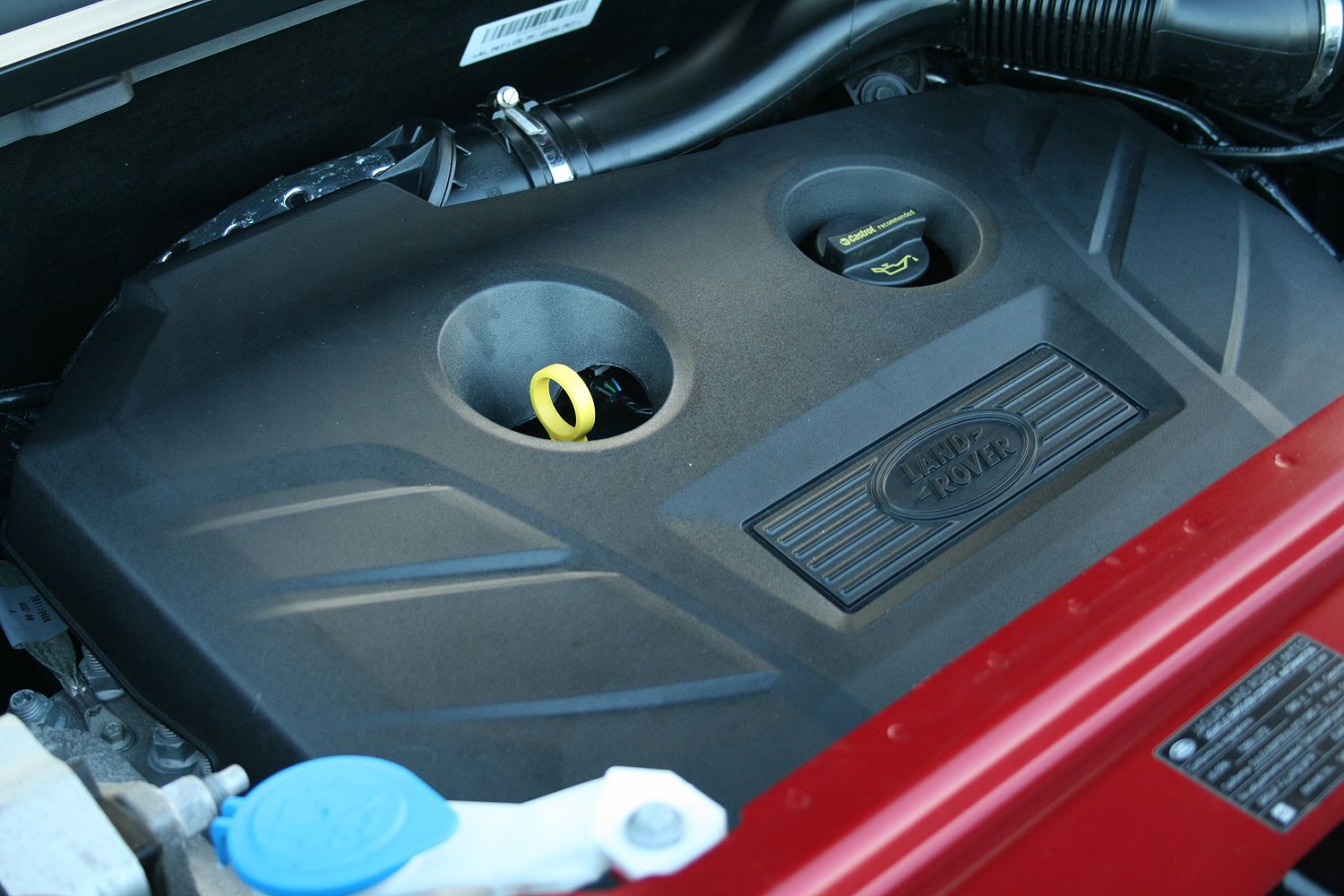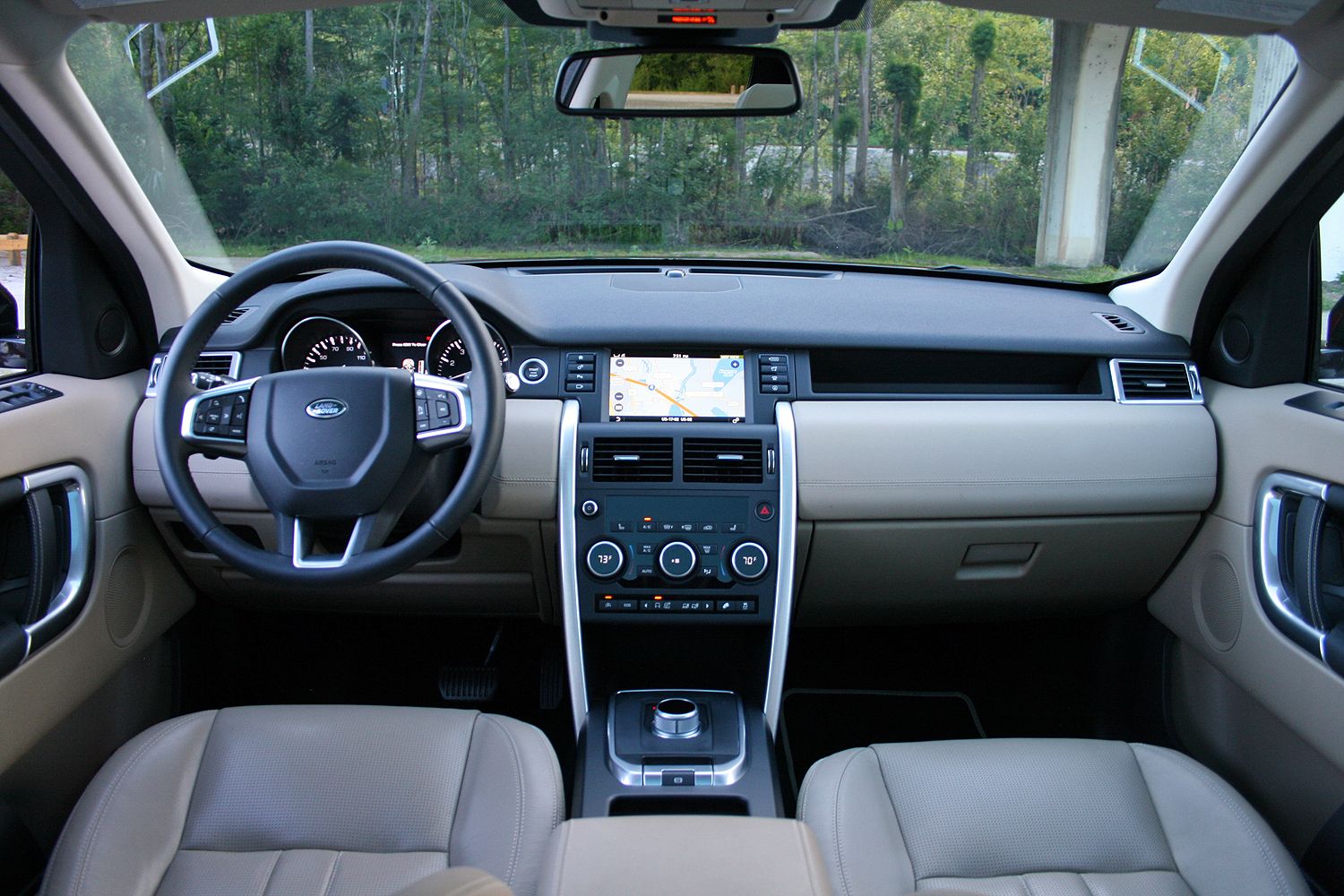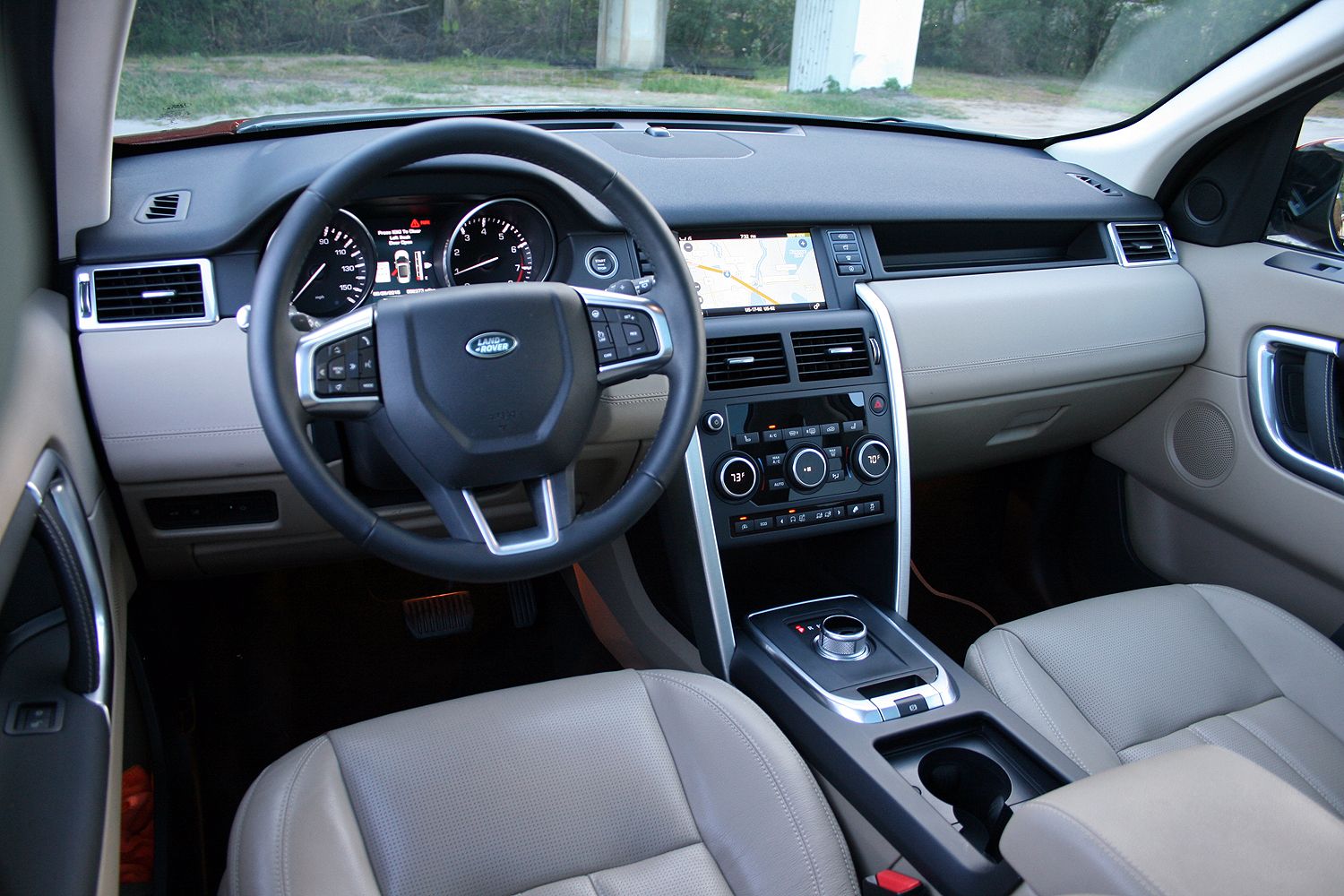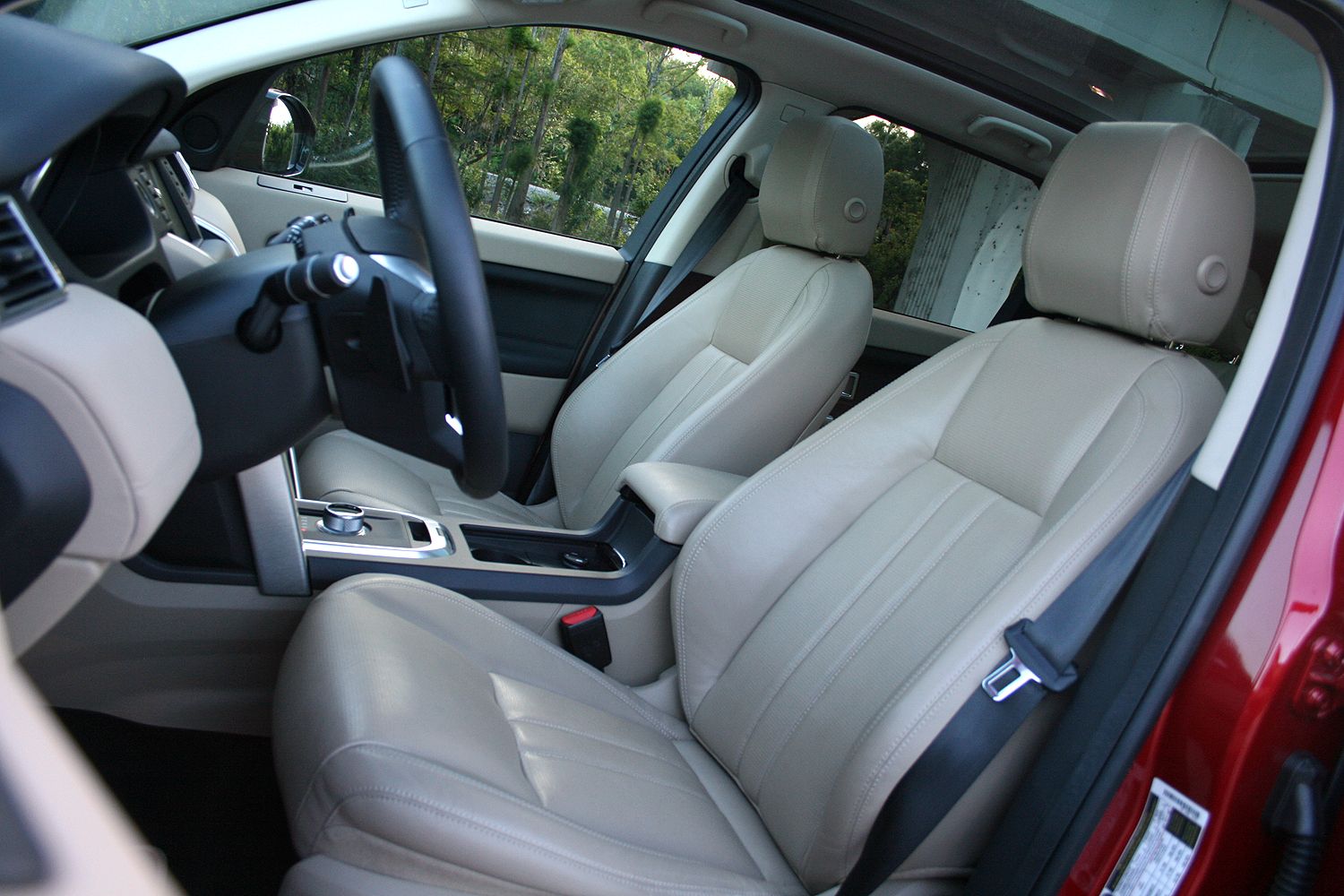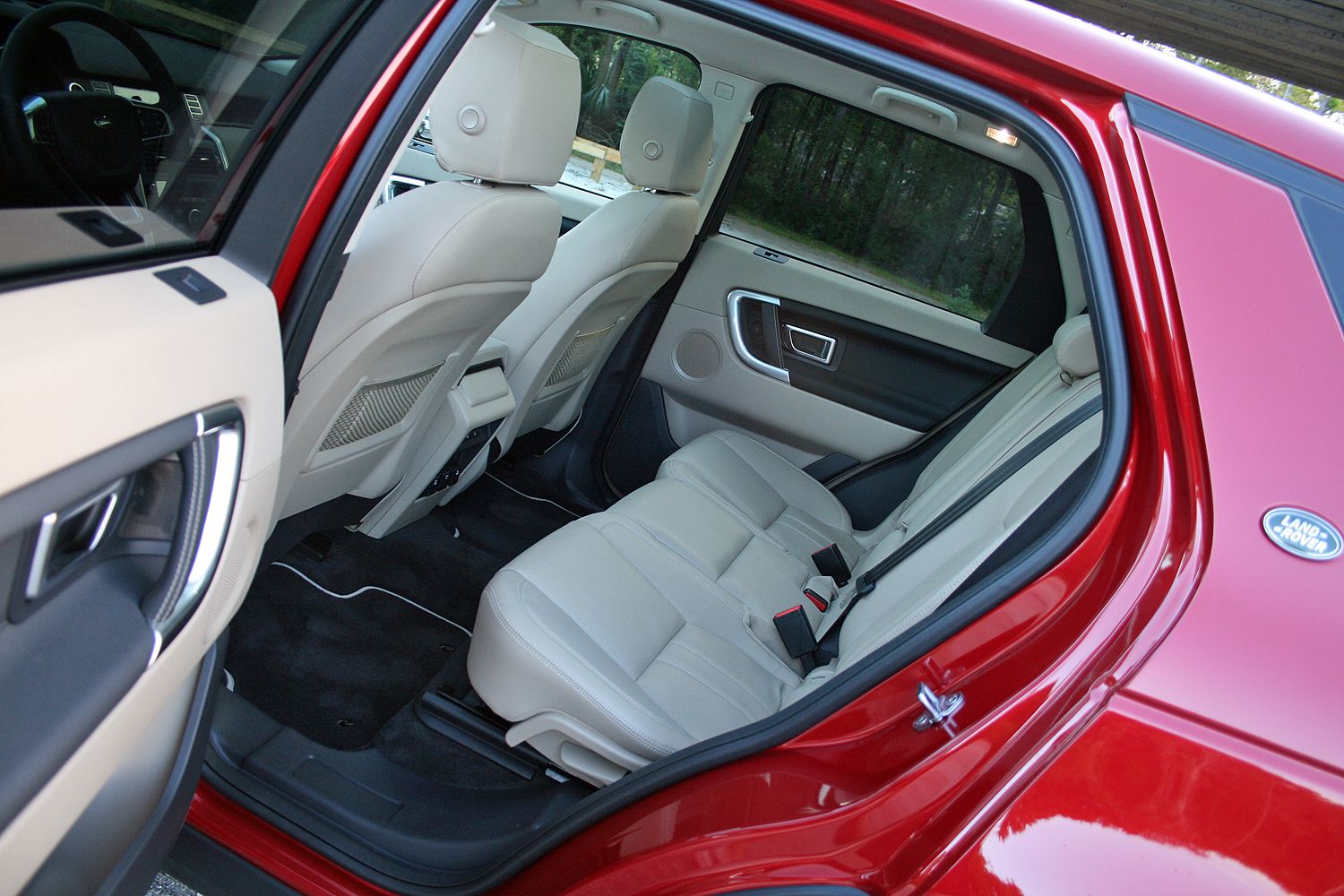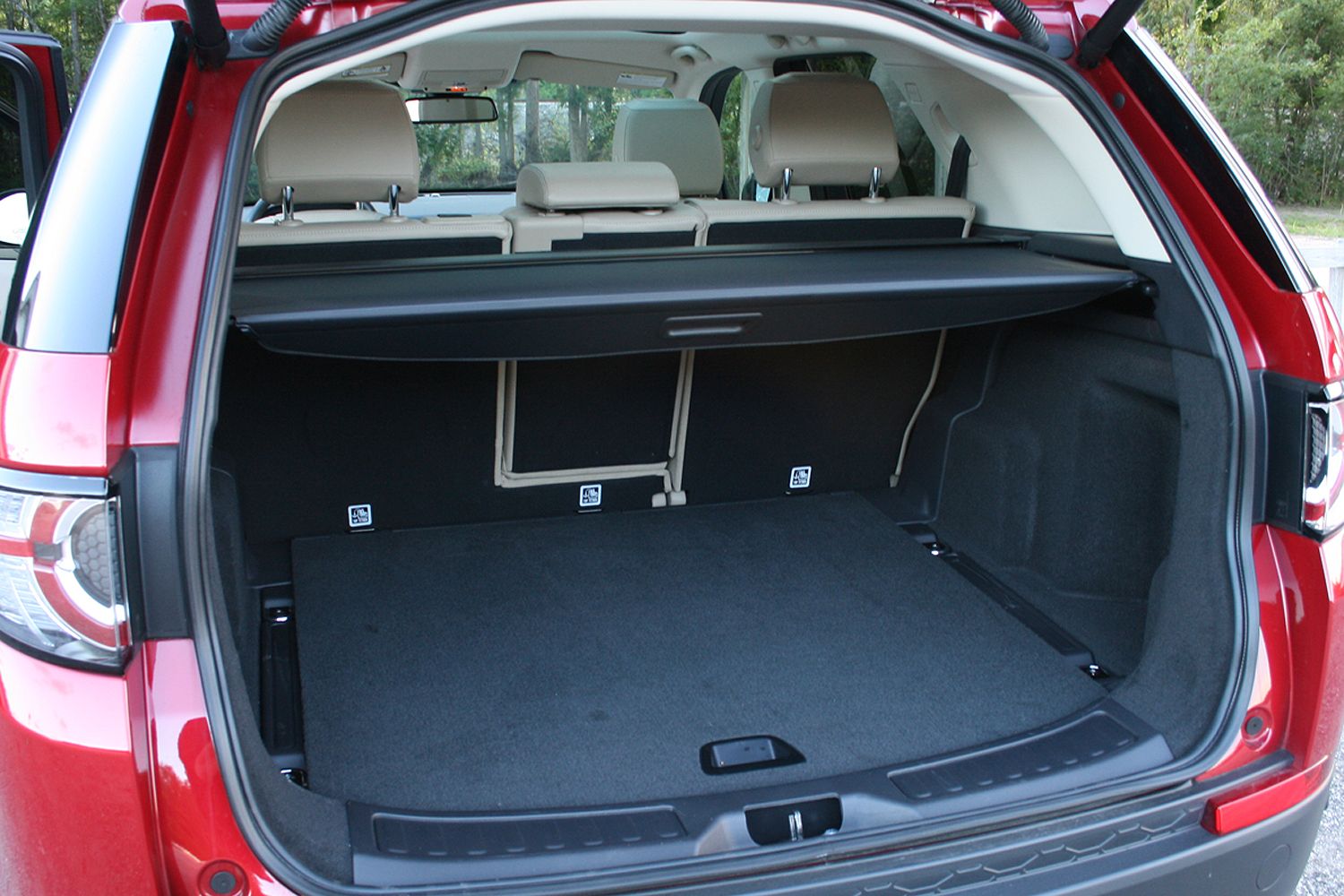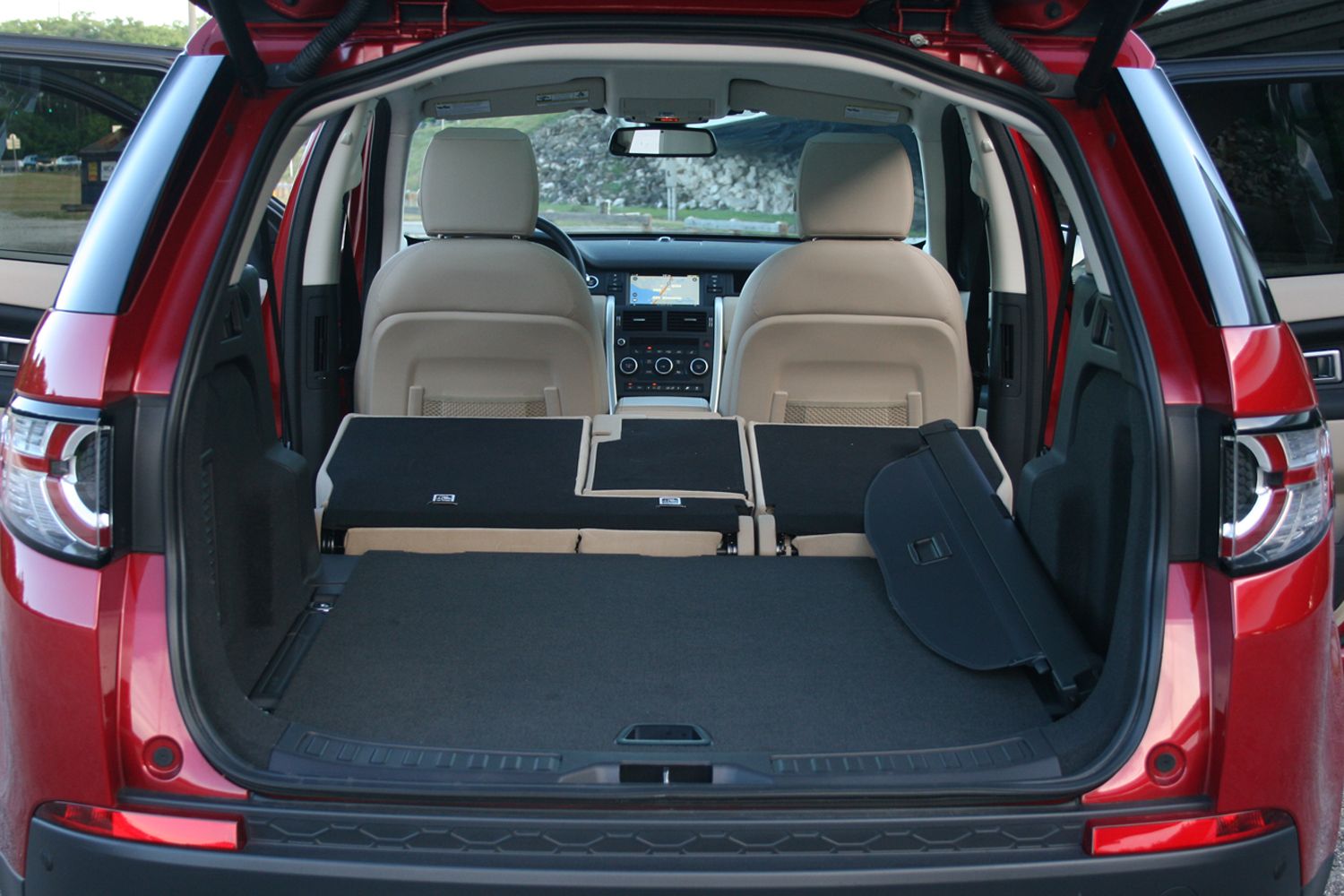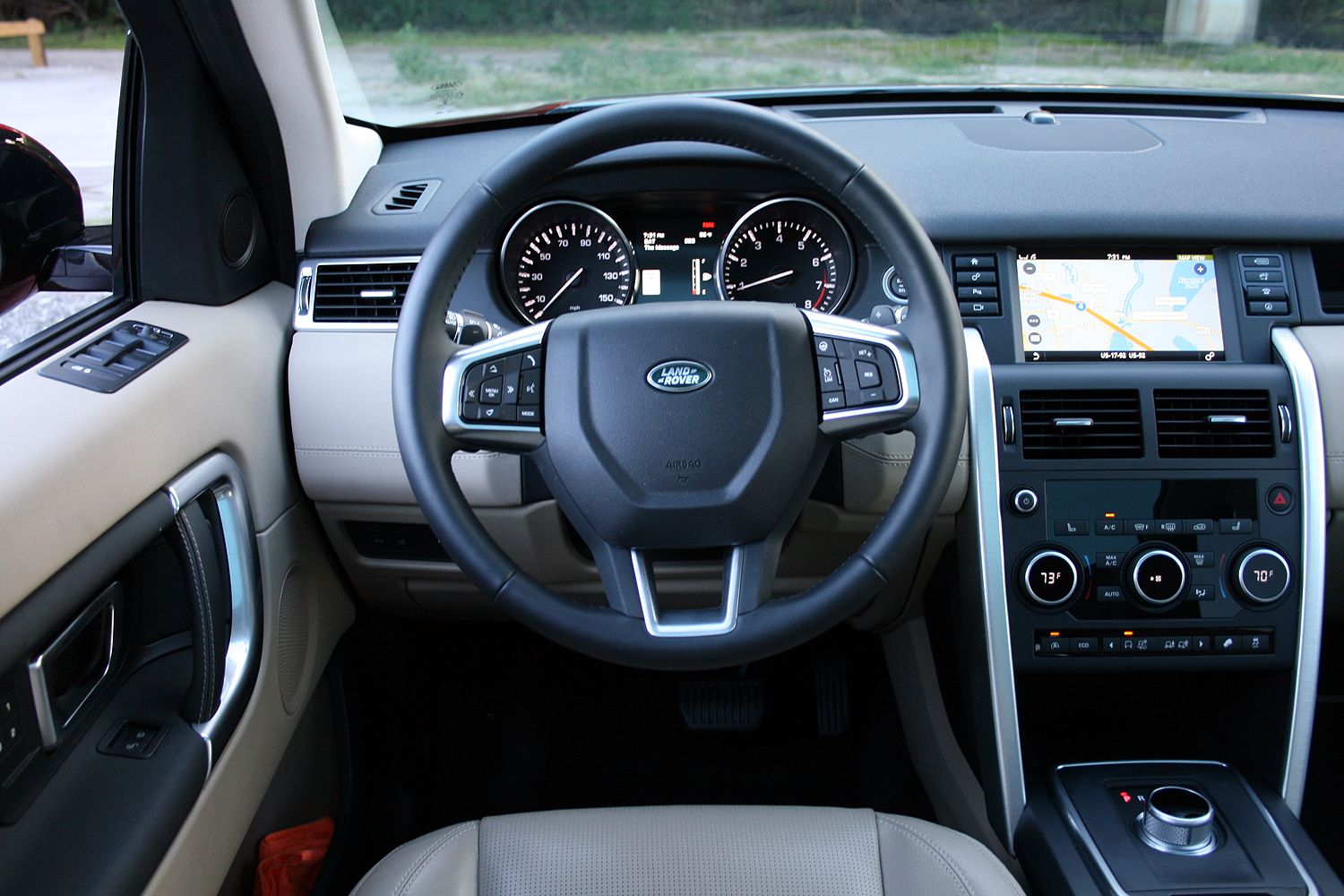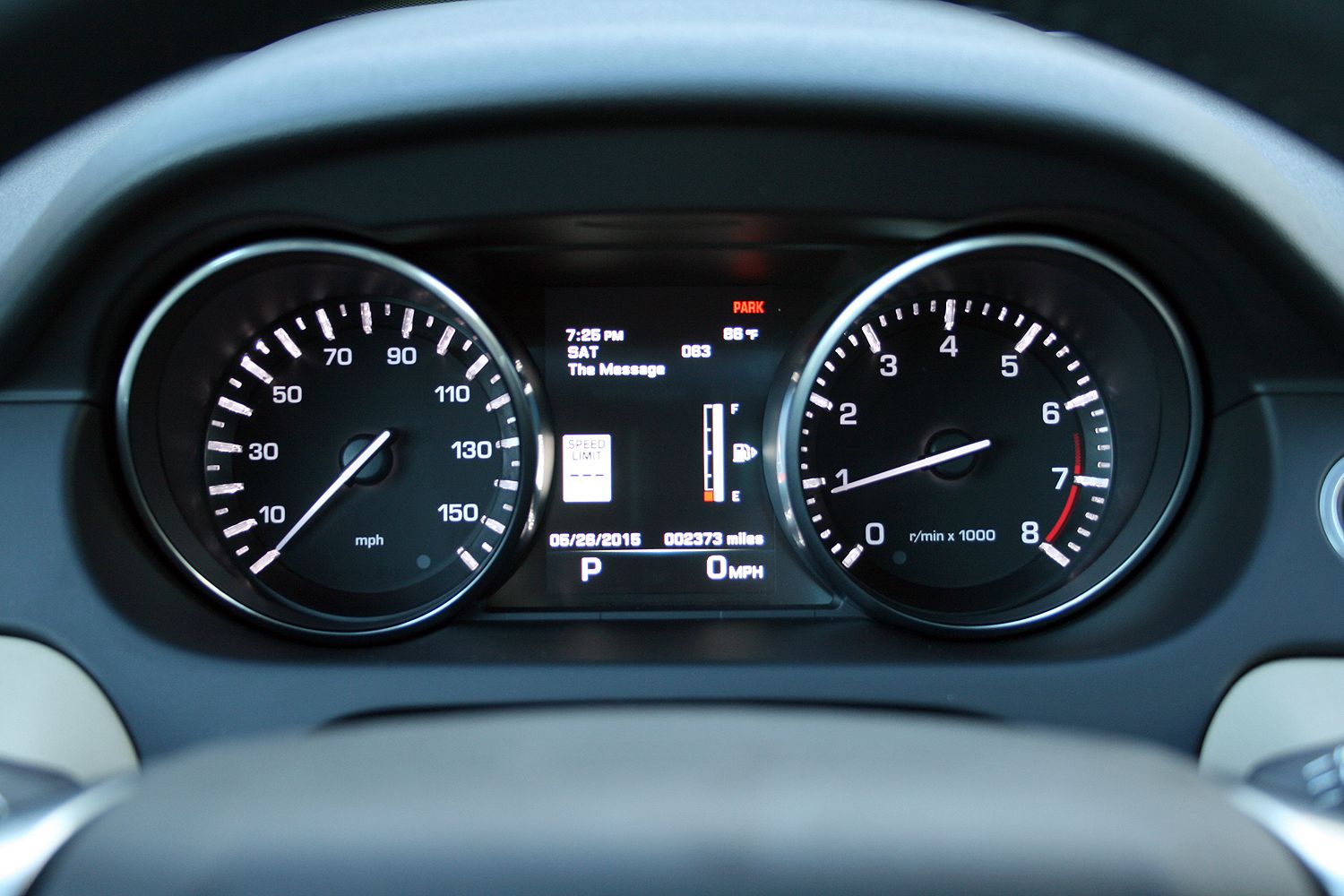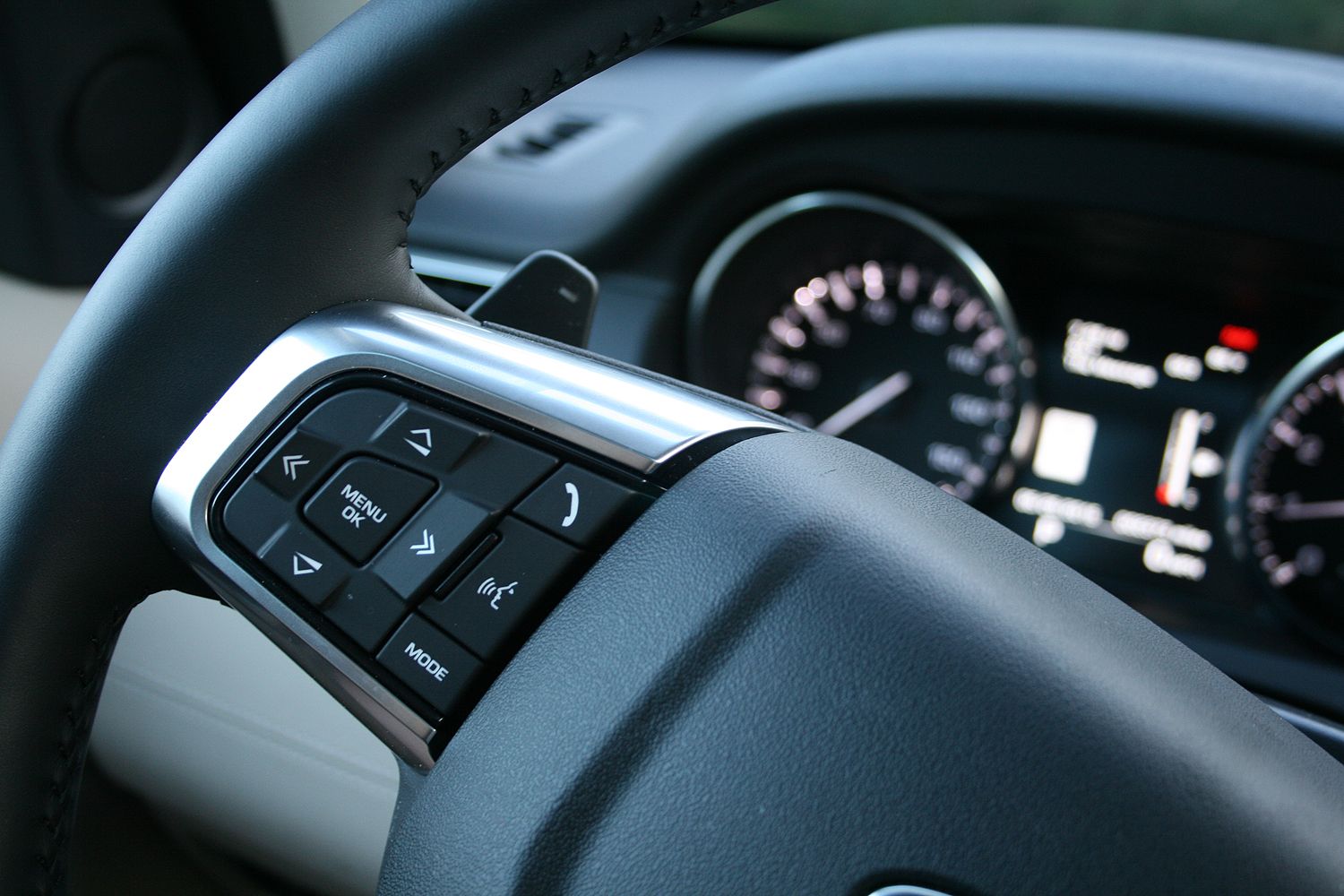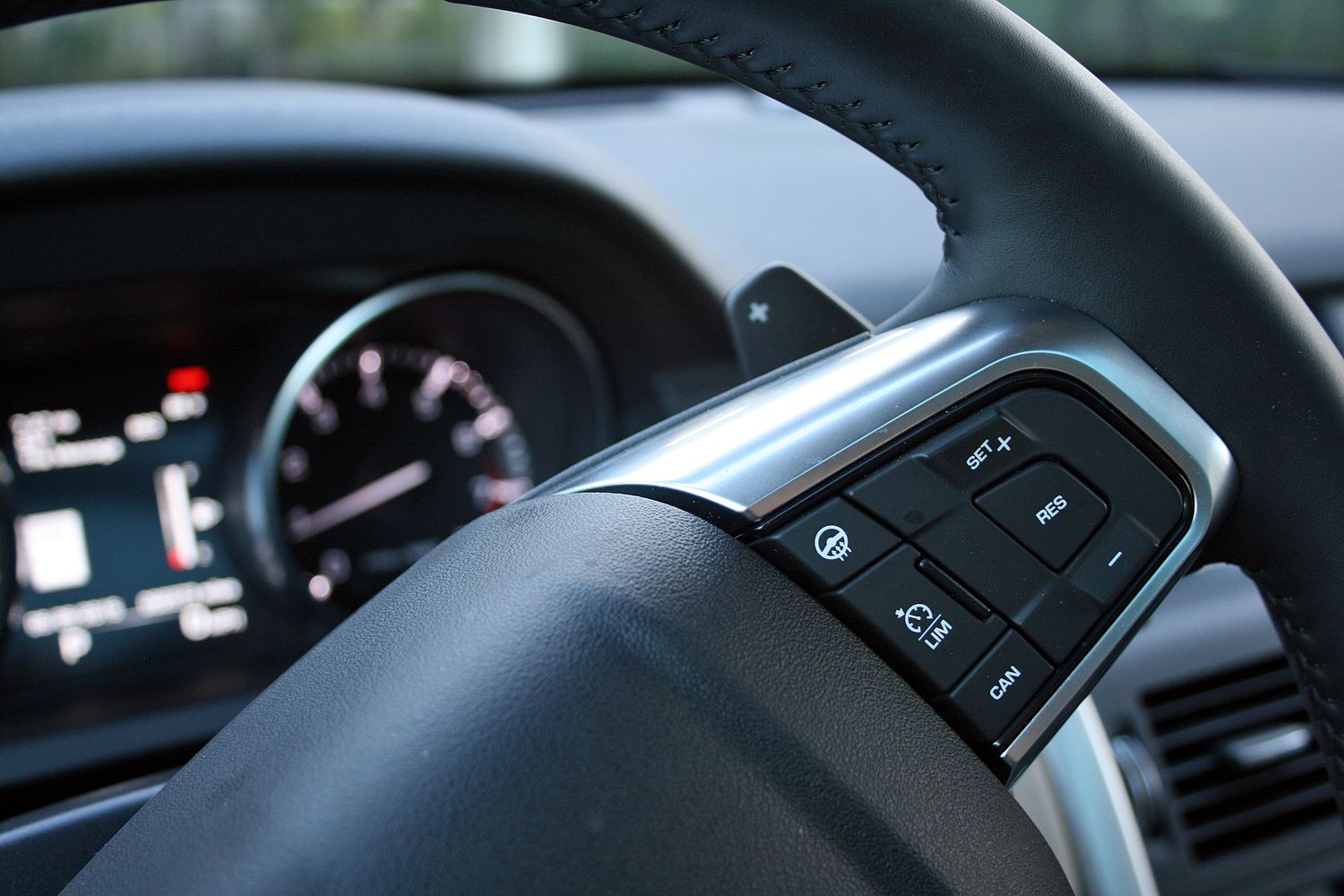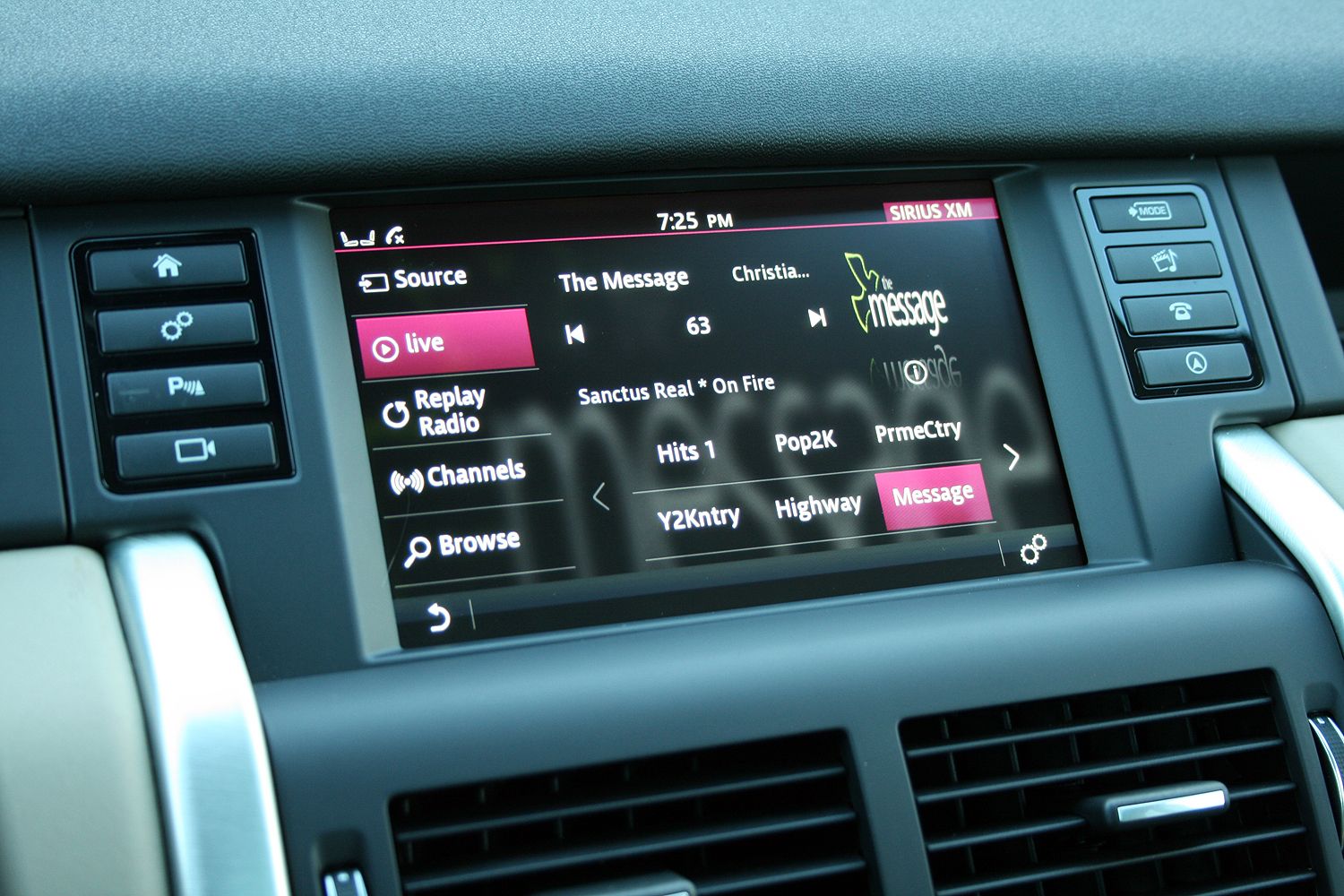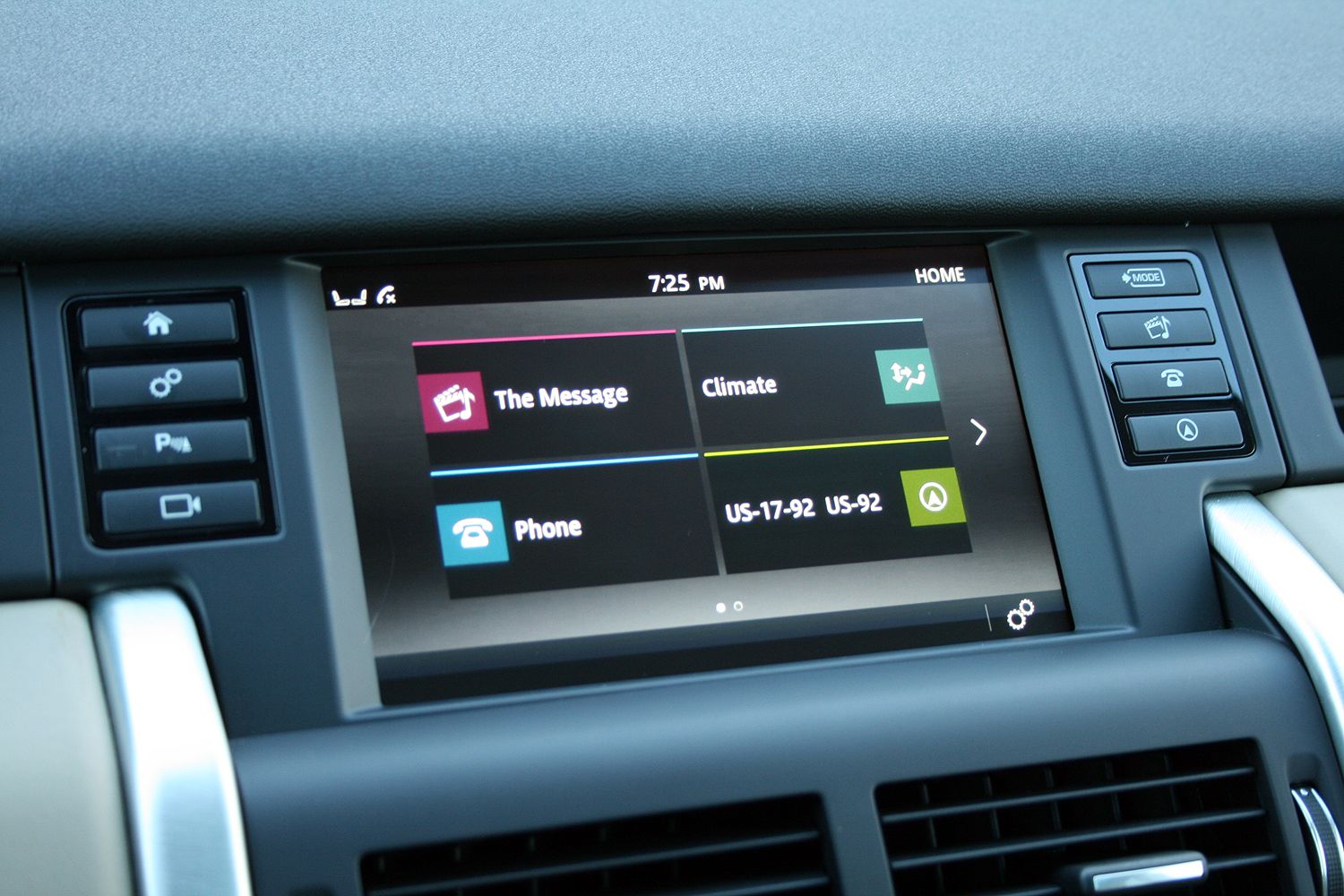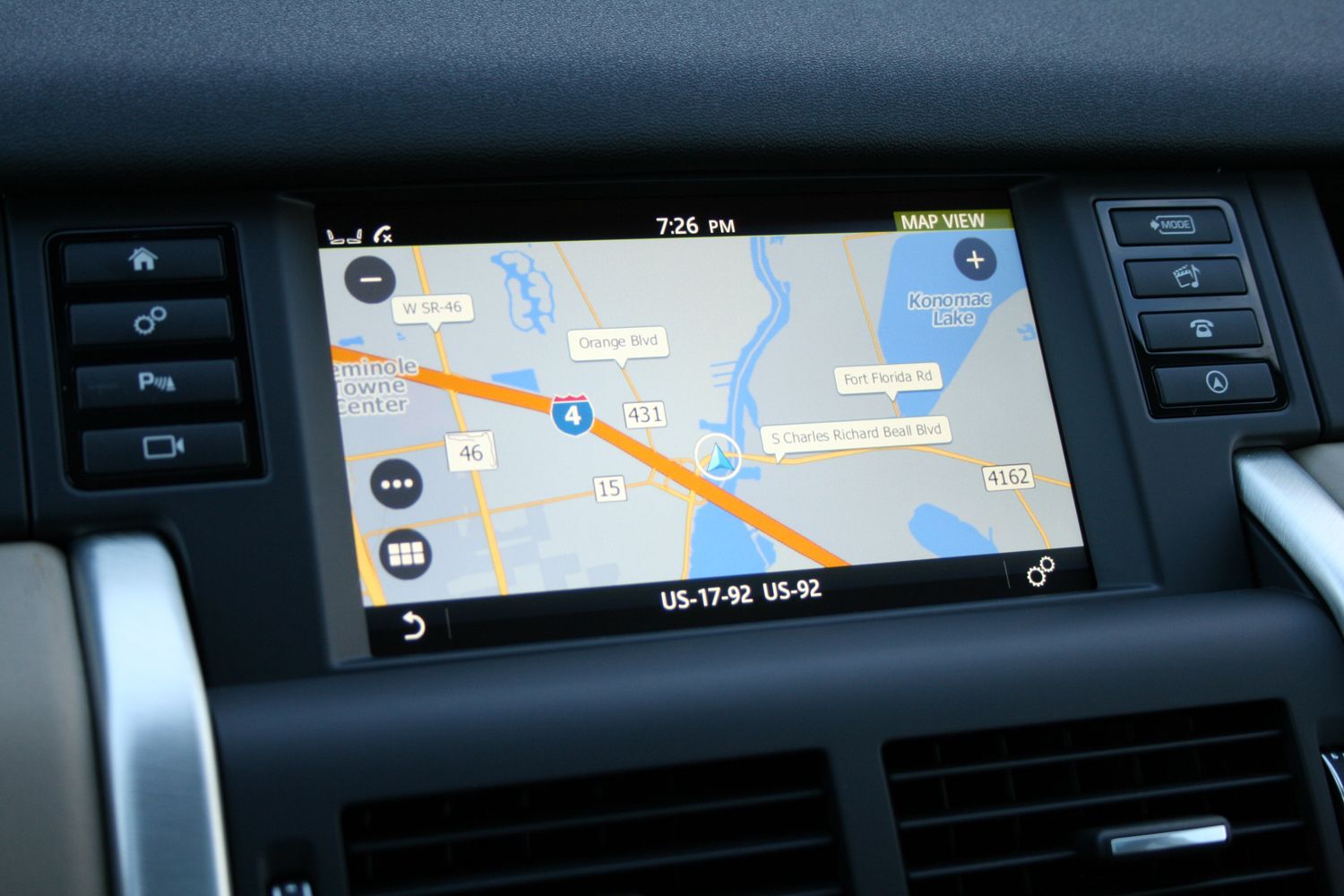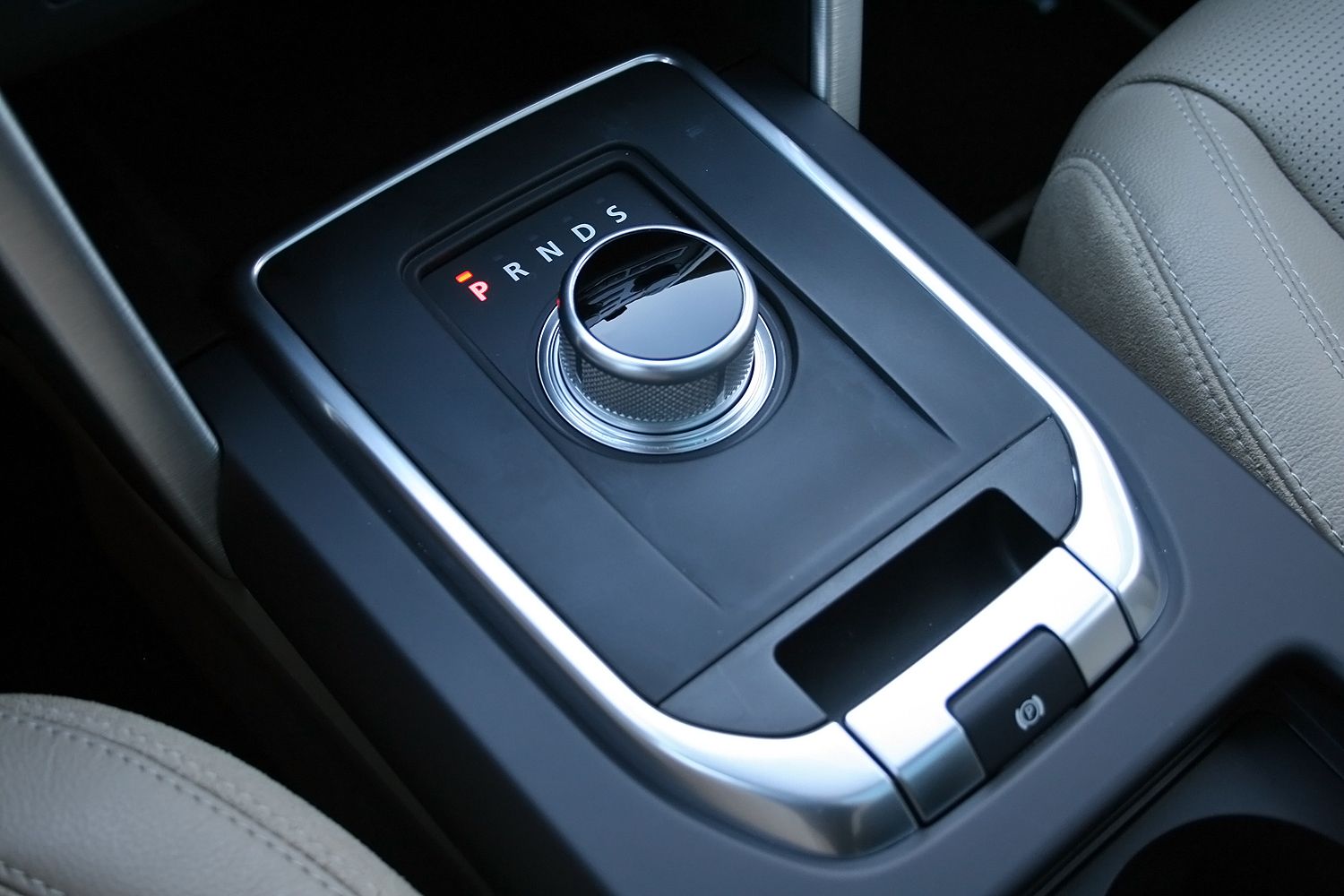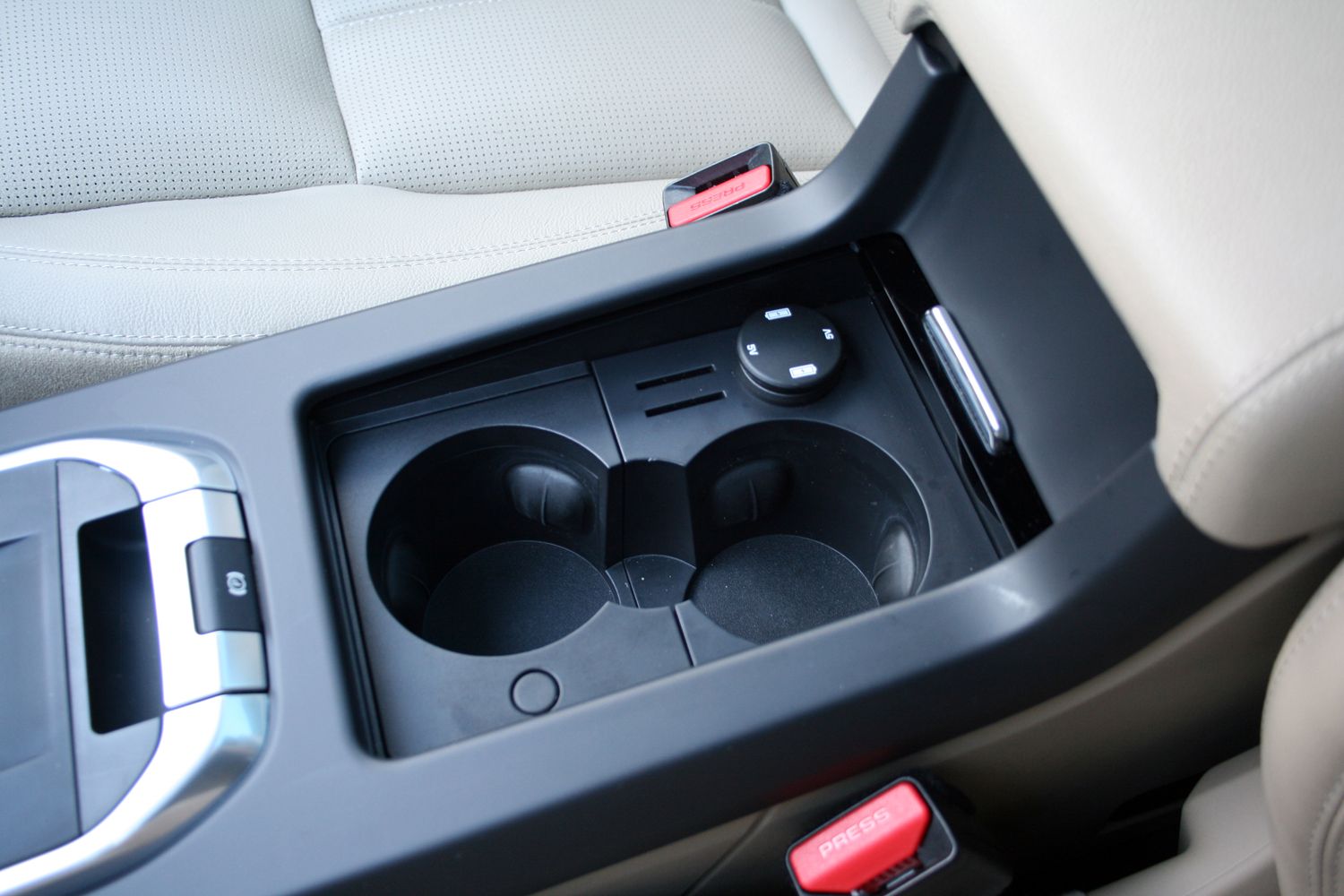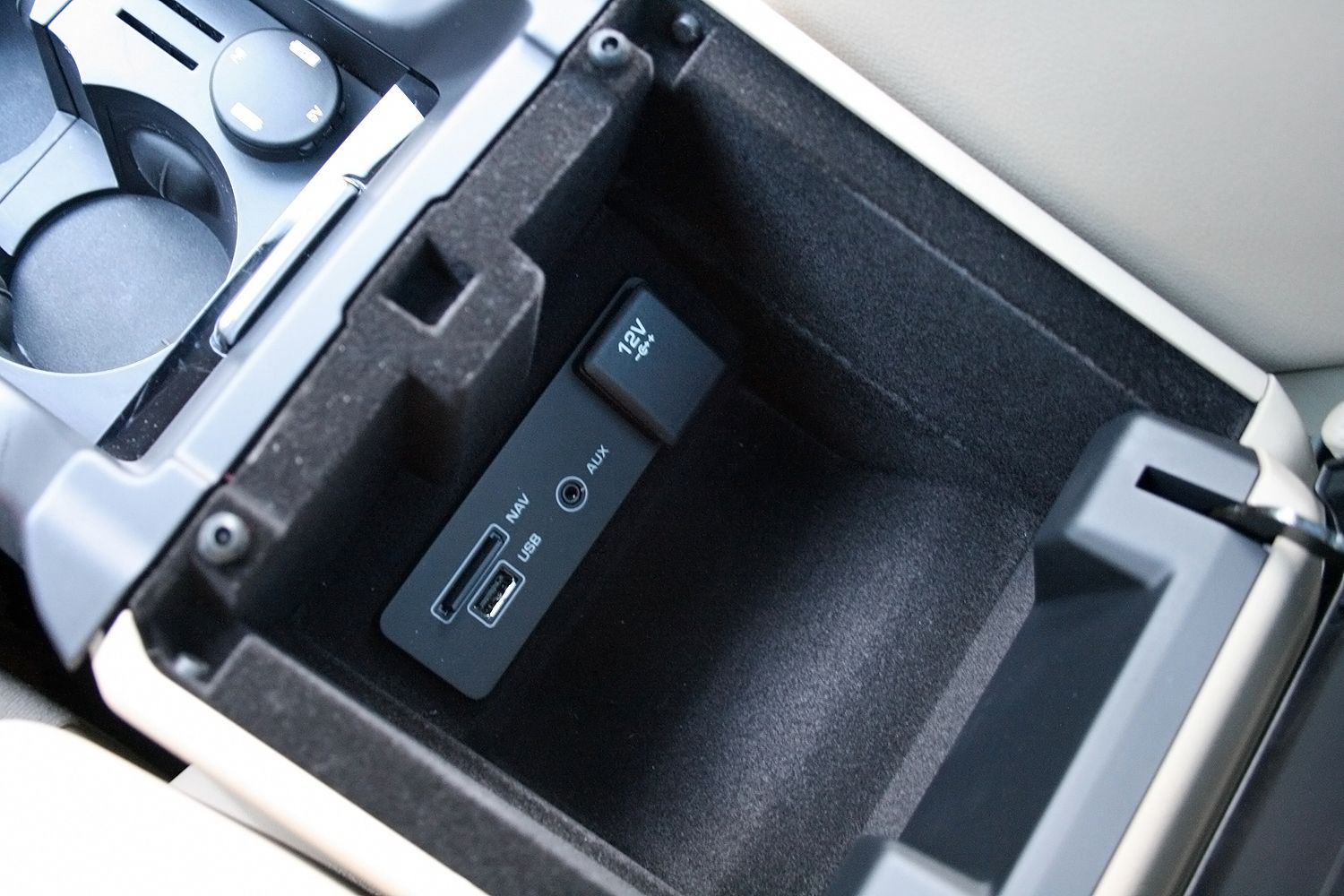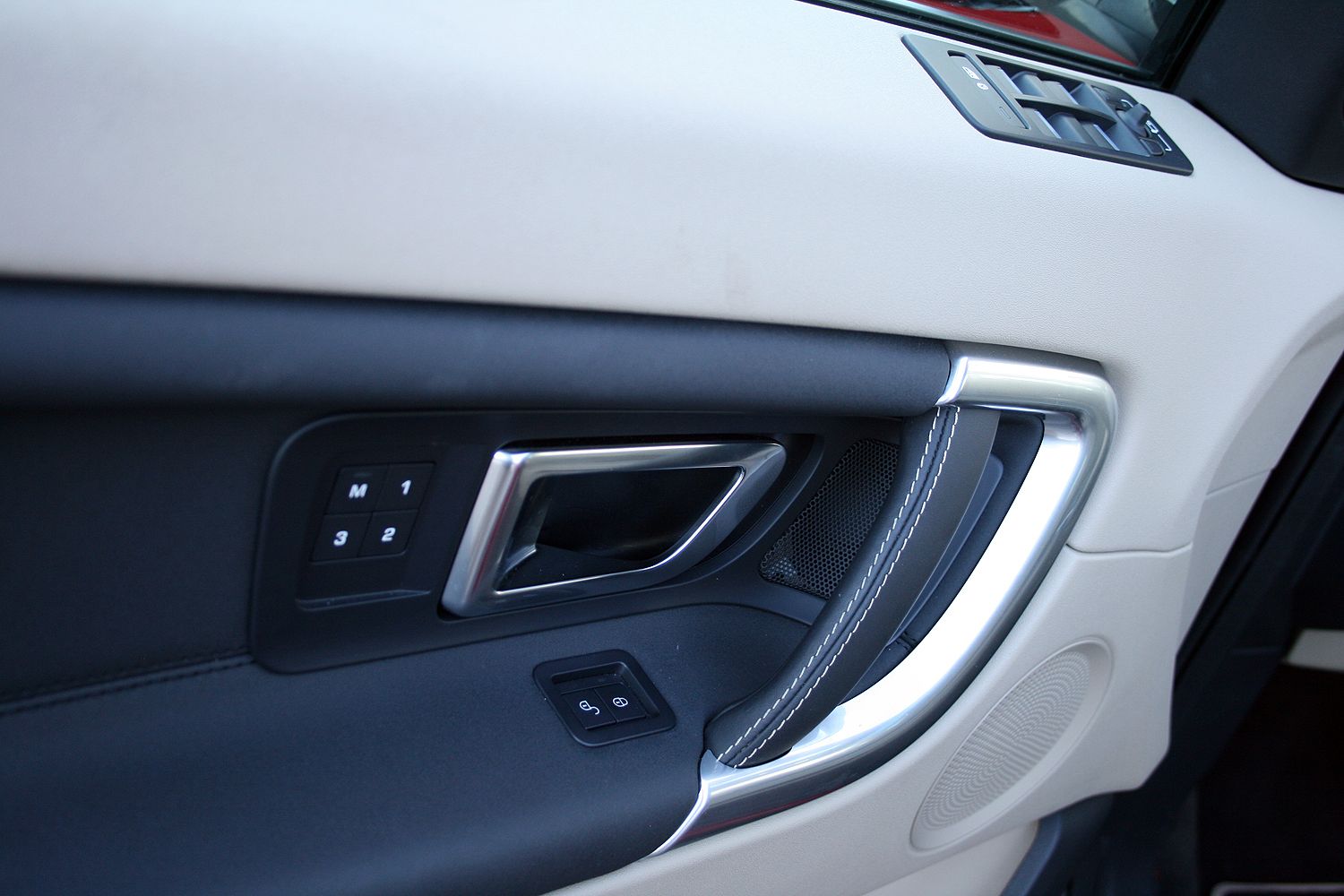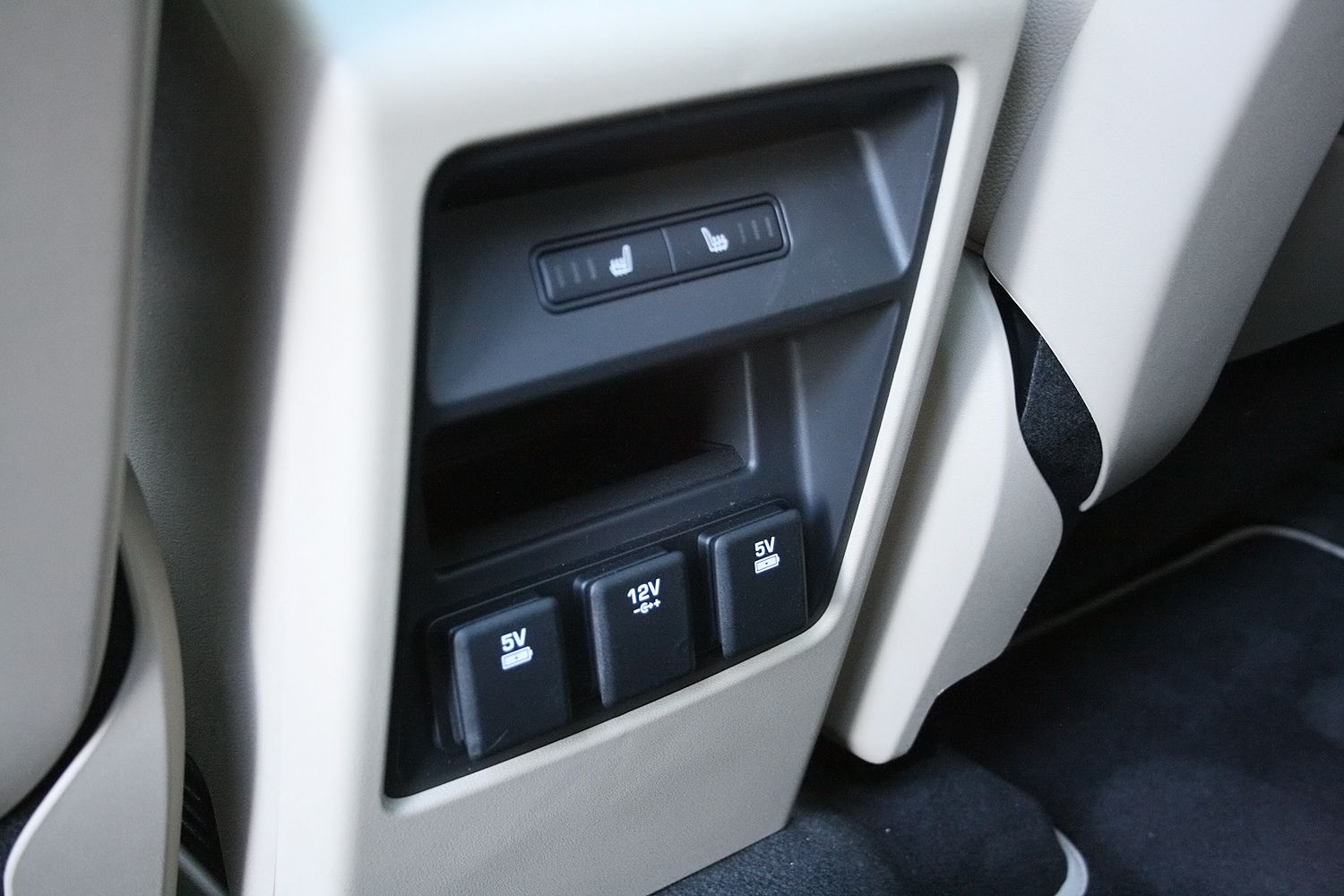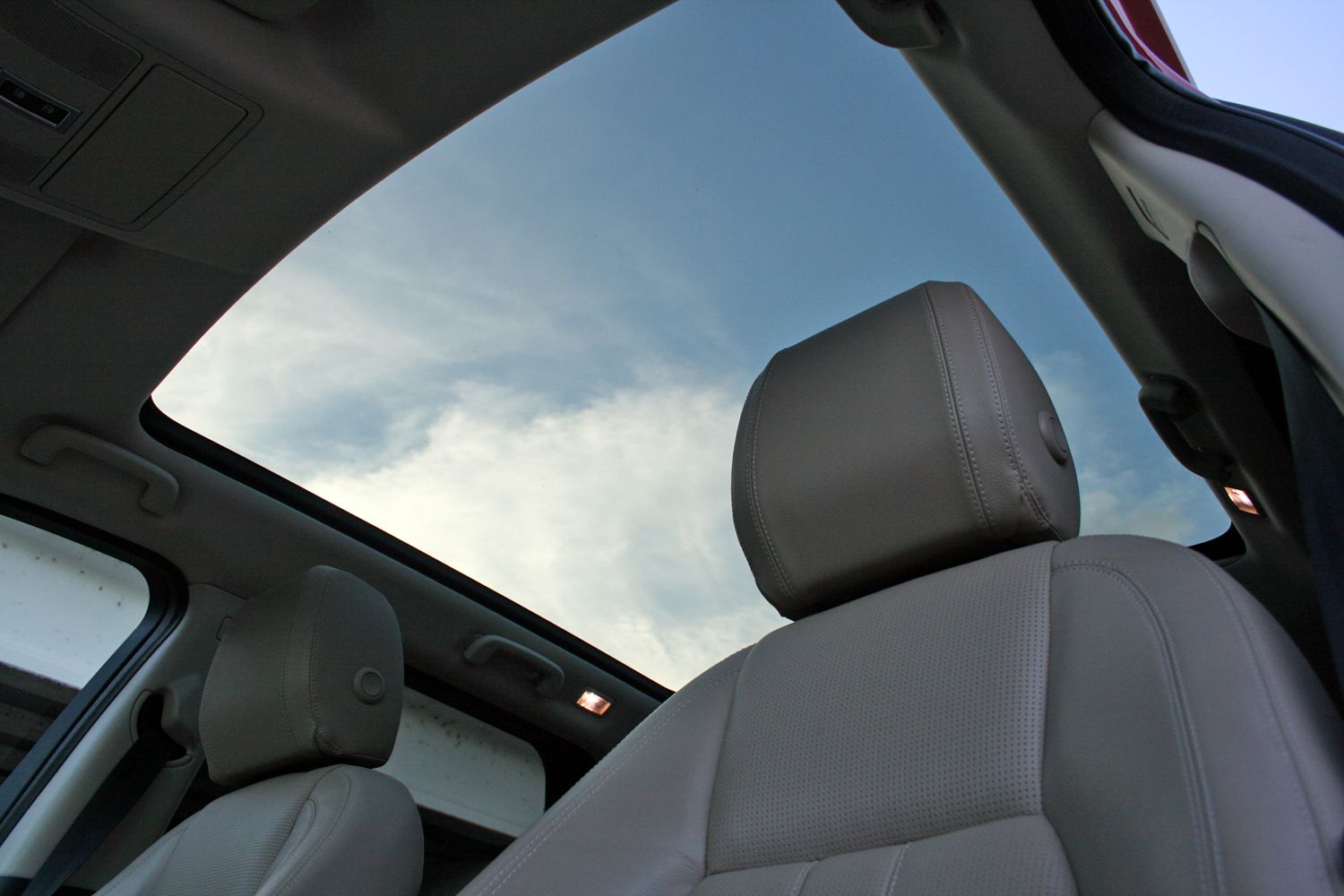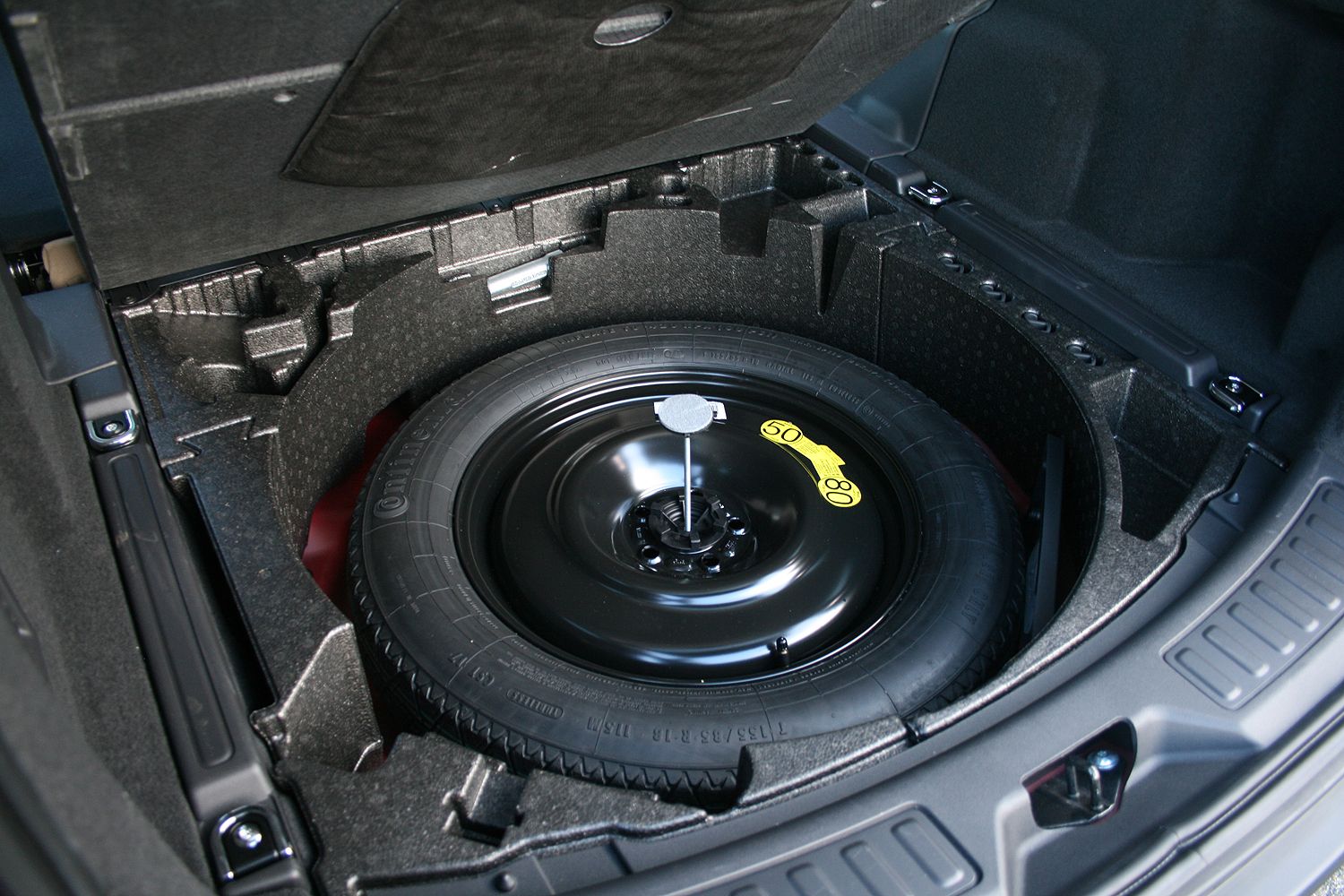The Land Rover->ke46 brand has been doing extremely well over the past fear years as sales continue to climb and quality becomes top notch. Still, Land Rover has some aging product taking up dealer showroom space – namely the archaic LR2/->ke1711Freelander.->ke510 Its design and many of its components date back to the Ford->ke31 era, and leave much room for improvement when compared to things like the LR4->ke4319 or Range Rover Evoque.->ke3666
Meet the all-new 2015 Land Rover Discovery Sport. Designed to replace the LR2/Freelander in every world market as Land Rover’s entry-level vehicle, the new unibody crossover borrows much of its underpinnings from the Range Rover Evoque. Ironically, the Ford flair finds its way into the package, as both the Evoque and now the Discovery Sport come powered by a 2.0-liter turbocharged four-cylinder sourced from the blue oval.
Nevertheless, the new Discovery Sport is a completely different animal when compared to the outgoing LR2. Its updated looks, more luxurious interior, and respectable off-roading abilities garners it desirability the LR2 hasn’t had in years. What’s more, the Disco Sport carries a fair price of $37,000, giving it a leg up in the premium crossover market.
I recently got to spend a week with an example coated in bright Firenze Red paint with 19-inch alloy wheels. My tester came with the top-trim HSE package, giving it nearly every bell and whistle you’d expect from a premium brand automaker.
Continue reading for the full driven review
2015 Land Rover Discovery Sport - Driven
- Make: Array
- Model: 2015 Land Rover Discovery Sport - Driven
- Engine/Motor: inline-4
- Horsepower: 240
- Torque: 250
- Transmission: nine-speed automatic
- [do not use] Vehicle Model: Array
Exterior
One look at the Discovery Sport and it’s instantly apparent Land Rover borrowed the platform from the Range Rover Evoque. It’s short-ish wheelbase, tiny overhangs, and rounded ends give it a very familiar appearance. Unlike the Evoque, however, the Land Rover ditches the Range Rover’s super sloping roof for one that actually accommodates rear seat passengers in comfort. The slope is still there, but definitely at a lesser degree.
The Discovery Sport’s look is relatively unique despite its stable mates. Land Rover did a great job incorporating plenty of classic design cues from other models. The cheese grader grille, HID headlight design, lower grille guard, black fender trim, and the long accent line that runs from the side vents rearward through the door handles are all incorporated.
Land Rover says the Discovery Sport is more than just a mall-crawling crossover, but rather a capable off-roader that’s ready to tackle most anything the average owner would dare attempt. It boasts an approach angle of 25 degrees, a break-over angle of 21 degrees, and departure angle of 31 degrees. Moreover, it can ford 23.6 inches of water without trouble and traverse an obstacle 8.3-inches tall without scraping. Impressive stats for an “entry level” vehicle.
Interior
The interior of the Discovery Sport is a welcoming place that continues with the familiar design trends. Its clean dashboard design is very reminiscent of the big-boy Range Rover, but is predictably fitted with less-expensive materials. Trim work is aluminum and no wood can be found. The dashboard’s front is padded with leather while the top is a soft-touch plastic. The soft-touch materials continue onto the door panels and center armrest. Leather also covers the steering wheel and all five seats.
Behind the wheel, the driver has a commanding view of the road. The low windowsills allow for comfortable arm-out-the-window driving and the low dashboard allows for a good view forward. Overall ergonomics are good and buttons are well placed. Speaking of which, the center stack enjoys a clean and logical layout. The HVAC controls couldn’t be simpler.
Land Rover’s Terrain Response system lies at the heart of the new Discovery Sport. Mounted low on the center stack is a toggle switch for selecting one of four terrain modes. They include: Pavement; Gravel and Snow; Sand; and Mud and Ruts. Changing between settings happens quickly and without fuss. Hill Decent Control is also present for navigating long, steep descents.
Mounted above everything else is Land Rover’s latest version of its infotainment system. The new design looks cleaner and more modern than before, though it still tends to respond slowly to touch commands. The system’s overall menu layout hasn’t changed, so all the settings and controls are right where anyone familiar with the old system would expect them to be.
Rear seat comfort is rather respectable, with plenty of legroom for outboard passengers. The 60/40-split bench seat offers a reclining position for better comfort on long trips, along with a padded center armrest. Both outboard seats are heated as well. Folding the seats flat is very easy thanks to a single lever. Once folded, the Discovery Sport offers 66.9 cubic feet of cargo room. Even with the seats in place, the crossover gives plenty of cargo room for gear, measuring in at 32.7 cubic feet of space. For those needing more people room, an optional third row is offered, but is designed as more “short term” seating. In fact Land Rover calls the design a 5+2 layout.
While there is plenty to like about the new Discovery Sport’s interior, I took issue with a few aspects of its design. The most glaring has to be the design of its center console. Sure, the rotary gearshift looks cool and works well, but it takes up a ton of valuable real estate that could be used for more storage. I couldn’t help but wonder why Land Rover didn’t mount the shifter at an angle between the center stack and console. That would free up six to eight inches of space for extra cup holders or storage trays.
Powertrain
The Discovery Sport might be an all-new vehicle to the Land Rover lineup, but its powertrain is showing its age. Under the hood lies a 2.0-liter EcoBoost four-cylinder engine sourced from Ford. This same engine can be found powering the Range Rover Evoque and even the outgoing LR2/Freelander. The transversely mounted gasoline engine produces 240 horsepower at 5,800 rpm and 250 pound-feet of torque at a low 1,750 rpm. The engine is equipped with an Auto Start/Stop feature that helps cut fuel consumption at red lights and in traffic jams.
Mated to the four-cylinder is ZF’s nine-speed automatic transmission. Unlike the nine-speed units found in several Chrysler->ke21 cars, this unit’s programming feels accurate. Shifts are still accompanied by a longish break in power delivery, however, and with nine speeds to work through, shifts happen very often. Of course, the transmission’s goal is to keep the engine in its most fuel-efficient sweet spot, and it does that quite well.
The Discovery Sport’s full-time AWD system offers great confidence on the road, in foul weather conditions, and off the beaten path. This version of Terrain Response offers the standard drive modes with the exception of Rock Crawl. A center differential works to keep traction moving to both axles and the Disco’s ESP offers an electronic version of a locking rear differential – sending power to the wheel with the most traction.
Despite the Land Rover’s off-road abilities, the Discovery Sport still returns decent fuel mileage. The EPA rates the crossover at 20 mpg city, 26 mpg highway, and 22 mpg combined. During my week of mixed driving, I averaged right at 22 mpg.
Driving Impressions
Thanks to its use of aluminum construction on its hood, roof, and several support structures within its high-strength steel unibody, the Discovery Sport’s turbo four only has to move 3,845 pounds of curb weight. It translates into decent responsiveness and a sprint to 60 mph that only takes 7.8 seconds. It also enjoys a governed top speed of 124 mph.
Around town the Discovery Sport is a smooth operator – at least when not being pushed. Its nine-speed transmission keeps the engine spinning at low revs and low levels of noise. Open the tap, however, and turbo lag and uninspiring shifts replace the tranquil drive.
Passing in traffic is an exercise in planning that goes like this: point, click, wait, accelerate, lift, jerk, upshift, and slow. Passengers might wonder if you think the throttle is an on/off switch. Sadly it feels that way.
Thankfully Land Rover already has a replacement engine in the works. Jaguar Land Rover’s new Ingenium turbocharged four-cylinder engine is slotted to debut in the upcoming Jaguar XE->ke3138 sedan and spread to other four-cylinder JLR vehicles. It should prove to be much smoother in its power delivery while offering more power and greater efficiency.
Beyond its powertrain, the Disco Sport offers good steering feel and a positive overall handling demeanor. The steering is nicely weighted and on-center feel is good. Body roll is nicely managed in the corner, giving the crossover a surprisingly fun feel on twisty roads.
Pricing
The 2015 Discovery Sport does inhabit Land Rover’s bottom spot in the line-up without sacrificing much on luxury and capability. It’s price, however, doesn’t reflect how good this vehicle looks. The base price starts at $37,070 for the SE trim level – undercutting many of its competitors. My tester came wearing the mid-grade HSE trim level. Options include the Climate Comfort Package ($1,600), the Driver Assist Plus Package ($,295), the Audio Upgrade Package ($800), Firenze Red paint ($950), the InControl apps ($430), and the removable cargo cover ($150).
Tack on the $925 transportation fee, and the total price stickers at $47,995.
For those wanting even more standard equipment and available options, the top-tier trim level is the HSE Luxury package and starts at $45,570 and grows with options.
Competition
BMW X3
BMW->ke178 has long had a lock on the luxury crossovers.->ke288 Its latest X3->ke255 offers plenty of room for four adults while giving buyers four choices in powertrains. The X3’s engines run the gambit from a 240-horsepower 2.0-liter turbo four-cylinder to a 300-horse inline six. AWD is standard on all except the base sDrive28i.
Prices are also quite competitive against the Land Rover. That base sDrive28i starts at $39,325 while the top-spec xDrive35i starts at $45,825. For the most direct comparison, the xDrive28i is the model to pick with its 240-horse I-4 and $40,725 starting price. Of course, BMW will let you add as many options as you’d like, sending the price skyward.
The BMW X3 is getting a refresh for 2017 that includes a new look and a few new features, but the current model still holds its own against the 2015 Discovery Sport.
Read our full review here.
Audi Q5
The Audi Q5->ke1666 is another fine piece of luxury crossover. Its standard Quattro AWD gives it sure-footing no matter what the weather and its three available engine options offer competitive horsepower and torque numbers. Though the Audi->ke14 does come with AWD, it is squarely classified as a “soft roader” thanks to its low grown clearance, road-biased tires, and lack of a low-range gear set of locking differentials. Still, the Q5 will tackle winter weather like a beast with some decent snow tires mounted up.
Power comes from one of three sources: the base 2.0-liter four-cylinder with 220 horsepower; the 3.0-liter supercharged V-6 making 272 horsepower; or the mighty 3.0-liter TDI V-6 that offers up 240 horsepower and a massive 428 pound-feet of torque.
Prices for the Audi Q5 start at $39,300 and rise into the mid $50,000 mark for the TDI with all the options selected.
You can read our Audi Q5 TDI Driven review here.
Conclusion
Land Rover’s newest member to its lineup proved to be a decently sorted crossover with the price, luxury, and capability that entry-level premium buyers crave these days. The Disco Sport should sell extremely well, finally giving Land Rover a volume vehicle that’s worth talking about. That’s especially true in more northern locations with dense populations – its compact size and all-weather capability give it the upper hand against the BMW and Audi.
The new Ingenium powertrain might not come for a couple more years – perhaps even waiting till a mid-cycle refresh – but one it hits showrooms, the few complaints I had with the powertrain should be solved. Even with its current powertrain, the Disco Sport still provides a good experience that’s worthy of the Land Rover name.

